#ruth pollock
Explore tagged Tumblr posts
Text
February Release!

Schmigadoon! - Broadway Center Stage
February 6, 2025 - Medium Observation
Video
Cast:
Alex Brightman (Josh Skinner), Sara Chase (Melissa Gimble), Isabelle McCalla (Emma Tate), Javier Muñoz (Doc Lopez), McKenzie Kurtz (Betsy McDonough), Ryan Vasquez (Danny Bailey), Brad Oscar (Mayor Aloysius Menlove), Ann Harada (Florence Menlove), Kevin Del Aguila (Reverend Layton/Leprechaun), Emily Skinner (Mildred Layton), Ayaan Diop (Carson Tate), Angel Reda (Countess Gabrielle Von Blerkom/Ensemble), Richard Riaz Yoder (Harvey the Innkeeper/Ensemble), Nathan Lucrezio (Farmer McDonough/Ensemble), Jess LeProtto (Pete/Ensemble), Phillip Attmore (Freddy/Ensemble), Brandon Block (Buford Riggs/Ensemble), Holly Ann Butler (Helen Pritt/Ensemble), Max Clayton (Larry the Fireman/Ensemble), Kimberly Immanuel (Zaneeta/Ensemble), Eloise Kropp (Nancy/Ensemble), Lauralyn McClelland (Ruth O’Reilly/Ensemble), Shina Ann Morris (Norma Nelson/Ensemble)

Master Notes:
Near perfect video of this AMAZING show. There is some washout in wideshots but that's really the only issue with this video aside from some shakiness and readjusting throughout.
NFT Date: August 1st, 2025

Screenshots:https://flic.kr/s/aHBqjC1KET
Video is $20

Les Misérables - Sixth US National Tour
January 18, 2025 (Matinee) - Medium Observation
Video
Cast:
Nick Cartell (Jean Valjean), Nick Rehberger (Javert), Lindsay Heather Pearce (Fantine), Delaney Guyer (Cosette), Jake David Smith (Marius), Mya Rena Hunter (Éponine), Matt Crowle (Thénardier), Christian Mark Gibbs (Enjolras), Victoria Huston-Elem (Madame Thénardier), Jack Jewkes (Gavroche), Kyle Adams (Grantaire), Daniel Gerard Bittner (Feuilly), Danny Martin (Courfeyrac), Andrew Marks Maughan (Combeferre), J.T. Wood (Joly), Steve Czarnecki (Factory Foreman/Brujon), David Andino (Bamatabois/Babet), Jonathan Young (Jean Prouvaire), Jeremiah Alsop (Montparnasse), David T. Walker (Claquesous), David T. Walker (The Bishop of Digne), Colin Anderson (Lesgles), Paige McNamara (Factory Girl), Ashley Alexandra (Old Woman), Emily Fink (Wigmaker), Emerson Mae Chan (Young Eponine), Greta Schaefer (Little Cosette)

Master Notes:
Excellent Video from the orchestra. Shot between heads but very beautfiul zooms. Wideshots can have a head or two but they usually never take away. Some washout, shakiness and readjusting throughout.

NFT Date: August 1st, 2025
Screenshots:https://flic.kr/s/aHBqjBYUhZ
Video is $20

The Great Gatsby - Broadway
February 7, 2025 - Medium Observation
Video
Cast:
Ryan McCartan (Jay Gatsby), Traci Elaine Lee (u/s Daisy Buchanan), Noah J. Ricketts (Nick Carraway), Samantha Pauly (Jordan Baker), Tess Soltau (u/s Myrtle Wilson), Terrence Mann (Meyer Wolfsheim), John Zdrojeski (Tom Buchanan), Charlie Pollock (George Wilson), Dan Rosales (Mr. McKee/Bystander #2), Dariana Mullen (Gilda Gray), Kayla Pecchioni (Mrs. McKee), Carissa Gaughran (Catherine), Samantha Pollino (u/s Bystander #1), Justin Keats (Cop)

Master Notes:
Decent capture of this show. Whenever Terry Mann is on stage it's a fancam. The first 20 minutes are completely blindly filmed so i defaulted to wideshotting most of it. Due to usher activity a lot of the show is shot this way, whenever he left i could zoom and such, second big issue with this video is the obstruction. The people in front of me never stopped moving and they kept getting into my shot constantly so there is a lot of obstruction that i try my absolute best to avoid.Some washout, shakiness and readjusting throughout.
NFT Date: August 1st, 2025

Screenshots:https://flic.kr/s/aHBqjC1PXh
Video is $15

Harry Potter and the Cursed Child - First US National Tour
January 28, 2025 - Medium Observation
Video
Cast:
John Skelley (Harry Potter), Emmet Smith (Albus Severus Potter), Aidan Close (Scorpius Malfoy), David Ables (e/c Ron Weasley), Ebony Blake (Hermione Granger), Trish Lindström (Ginny Potter), Benjamin Thys (Draco Malfoy), Naiya Vanessa McCalla (Rose Granger-Weasley), Julia Nightingale (Delphi Diggory), Timmy Thompson (Craig Bowker Jr.), Mackenzie Lesser-Roy (Moaning Myrtle/Lily Potter Sr.), Ayla Stackhouse (u/s Polly Chapman), Larry Yando (Severus Snape/Amos Diggory/Albus Dumbledore), Evan Maltby (s/w Lord Voldemort), Chadd Alexander (u/s Sorting Hat), David Fine (Yann Fredericks), Alexis Gordon (Madam Hooch), Katherine Leask (Dolores Umbridge/Professor McGonagall), Maren Searle (Trolley Witch), Caleb Hafen (Cedric Diggory/James Potter Sr.), Zach Norton (Karl Jenkins/Viktor Krum), Rene Thornton Jr. (Station Master), Torsten Johnson (Professor Mazoni), Paul Thornley (Voice of Ludo Bagman), Chris Jarman (Voice of Phone Box)

Master Notes:
Excellent Video of this tour! Due to how far i was alongside the darkness of the show it can become grainy at points. Some washout, shakiness and readjusting throughout. All sales from this video will be donated to Mermaids UK.
NFT Date: August 1st, 2025

Screenshots:https://flic.kr/s/aHBqjBZSdU
Video is $20

The Bedwetter - Arena Stage
February 5, 2025 - Medium Observation
Video
Cast:
Aria Kane (Sarah), Shoshana Bean (Beth Ann), Darren Goldstein (Donald), Liz Larsen(Nana), Ashley Blanchet (Miss New Hampshire), Alina Santos (Ally), Alysha Umprhess (Mrs. Dembo), Avery Harris (Laura), Rick Crom (Dr. Riley), Emerson Holt Lacayo (Abby), Elin Joy Seiler (Amy)

Master Notes: Excellent video of this shows first preview! There are 2 show stops but i’ve cut them down to about 10-15 seconds each. Some washout, shakiness and readjusting throughout.
NFT Date: August 1st, 2025

Screenshots:https://flic.kr/s/aHBqjC1KE2
Video is $20

Six - Second US National Tour (Boleyn)
January 8, 2025 - Medium Observation
Video
Cast:
Chani Maisonet (Catherine of Aragon), Gaby Albo (Anne Boleyn), Kelly Denice Taylor (Jane Seymour), Danielle Mendoza (Anna of Cleves), Alize Cruz (Katherine Howard), Tasia Jungbauer (Catherine Parr)

Master Notes:
Fantastic Video of the new tour cast! Due to my seat sometimes it can be a tad grainy but other than that great video. Some washout, shakiness and readjusting throughout.
NFT Date: February 6th, 2026

Screenshots:https://flic.kr/s/aHBqjBXFgm
Video is $20

Hadestown - First US National Tour
March 14, 2024 - Medium Observation
Video
Cast:
John Krause (t/r Orpheus), Amaya Braganza (Eurydice), Matthew Patrick Quinn (Hades), Lana Gordon (Persephone), Will Mann (Hermes), KC Dela Cruz (u/s Fate), Hannah Schreer (Fate), Marla Louissaint (Fate), Sevon Askew (Worker), Jamal Lee Harris (Worker), Cate Hayman (Worker), Quiana Onrae'l Holmes (Worker), Daniel Tracht (Worker)

Notes:
Excellent Video of John Krause’s first performance back on the tour! There is a show stop during way down hadestown which causes them to restart the song when they come back on stage.Some washout, shakiness and readjusting throughout.
NFT Date: August 1st, 2025

Screenshots:https://flic.kr/s/aHBqjBiyw4
Video is $20
To Purchase any of these videos please fill out this form
#mediumobservation#les miserables#schmigadoon#the great gatsby#six the musical#hadestown#hpcc#the bedwetter#musical bootlegs#les mis#les mis tour#nick rehberger#les mis 2024#shoshana bean#ryan mccartan#alex brightman#terrence mann#mckenzie kurtz#slime tutorial
40 notes
·
View notes
Text
Austin Sarat for The Contrarian:
Today, Columbia University gave in to outrageous demands from the Trump Administration. The university announced it would do what the administration demanded in a letter sent on March 13. Writing in The Guardian, Professor Sheldon Pollock aptly described the administration’s challenge as the “most dangerous letter in the history of higher education in America…Like a ransom note, the government letter insists that Columbia comply with a list of Trump administration demands in order to even have a chance at recovering the $400m in federal funding for scientific research that the government canceled on 7 March.”
As I have noted, the letter demanded that “Columbia change its admissions practices and its disciplinary process, including mandating the ‘arrest and removal of agitators who foster an unsafe or hostile work or study environment.’” The Trump Administration also told the university to ban masks “intended to conceal identity or intimidate others,” and “put its Middle East, South Asian and African Studies Department in academic receivership.” According to The Wall Street Journal, "Columbia agreed to ban masks, empower 36 campus police officers with new powers to arrest students and appoint a senior vice provost with broad authority to oversee the department of Middle East, South Asian and African Studies as well as the Center for Palestine Studies." It did not call that authority a form of receivership, but it is receivership by another name; no one should be fooled.
By acquiescing to such heavy-handed and intrusive demands, Columbia University has become almost an arm of the federal government, not an independent center of learning and a home to free thought. Its decision will only embolden the administration in Washington, D.C., propel further attacks on universities, and undermine and demoralize those working to preserve American democracy. By running up a white flag, Columbia has set a model for how the administration will deal with Harvard, Princeton, Johns Hopkins, and many others. Unfortunately, we know how this ends. Michael Ignatieff, former president of what once was Hungary’s Central European University, is right to say that “The real challenge, whenever an authoritarian government attacks a university, is that they have already prepared the ground, portraying universities as privileged enclaves of the entitled and the condescending, trapped in their own self-regarding bubble of wokeness. These politicians play expertly on the resentments of those who don’t have college degrees.” “They grab hold of the flag of academic freedom,” Ignatieff writes, “and wave it in the face of university administrators struggling to balance the imperatives of campus order and civility against their First Amendment obligations.” Sound familiar? This is precisely the playbook Trump and his colleagues have followed in their now successful effort to bring a great university to its knees. In Hungary, Victor Orbán financially starved institutions, including Ignatieff’s, until, one after another, they accepted his terms.
As Ruth Ben-Ghiat explains, strongmen like Orbán “don't only shut down intellectual freedom and change the content of learning to reinforce their ideological agendas, but also seek to remake higher education institutions into places that reward intolerance, conformism, and other values and behaviors authoritarians require.”
[...] They are right. It is hard to convince people to join the fight for an institution when it won’t fight for itself and when one of its constituent elements feels betrayed by its decision. After Columbia's deal with the Trump Administration, it will be harder to get people to risk resistance in any sphere lest they, too, be betrayed. When powerful institutions like Columbia give in to threats and pressure tactics, others get the message: Resistance is futile. To get along, you have to go along. Rather than wait to be threatened themselves, people feel encouraged to do what Timothy Snyder calls “obeying in advance.” Authoritarians pick targets that they can use as examples. That’s why, early in their efforts to consolidate power, they go after the strong, not just the vulnerable. Columbia and the law firms the Trump administration has put on its enemies list serve as showcase targets whose downfall or acquiescence will attract attention.
Columbia University shamefully caves into the pro-Israel Apartheid lobby and the Trump Regime by obeying the shakedown request that will wreck academic freedom and freedom of speech. The shakedown of Columbia University is part of the Orbán-esque authoritarian attacks on higher education by Fascist 47.
See Also:
Vox: The elite institutions caving to Donald Trump, briefly explained
NBC News: Columbia University agrees to Trump demands in effort to restore federal funding
Al Jazeera: How Columbia gave in to Trump’s demands to get its $400m funding back
#Columbia University#Campus Protests#Donald Trump#Trump Administration II#Academic Freedom#Freedom of Speech
20 notes
·
View notes
Note
ik its taboo to ask but, what do you see in rothkos work? Why do you like it?
It's not taboo! But I have answered this many times before so, I might direct you here or here for random examples of my answers and just add a bit, perhaps retreading...
Rothko gets singled out for being famous and looking simple (though it's not not) but I don't feel the criteria is different than it would be for any other artist.
My favorite artists, Munch, Bearden, Hokusai, Bill Traylor, Ruth Asawa etc., what do they have in common? Just the basics of form, color and light and the emotion that is carried through them.
I don't feel like the public always has great taste but I do subscribe to the idea that Rothko would not have endured if his work did not have meaning to some. And some of those people were Joan Mitchell, Brice Marden, Helen Frankenthaler, Motherwell, Pollock, Elaine De Kooning, Tracey Emin, Robert Ryman etc. Other fine artists blown away by these seemingly simplistic works. This doesn't mean you have like Rothko or any artist but you know here we are the the Rothko detractors kind of amuse me, not for their taste but rather for their arguments.
I think a lot of people just aren't exposed in person to a wide variety of art and when you see things in the flesh, so to speak, it's a wildly different experience than the world of looking at computers. And art museums are also places people react to thinks as a group and it's an interesting footnote to see how art affects people, sometimes it can make you think.
I have devoted so much to time to Rothko, sometimes I have asked myself why, maybe he's not as good as I think, I see them everyday, it can be tiring to research and post and be involved with it.
And then, I see one again or, as in the last two weeks, I see shots from the Paris show (I couldn't afford to go but they did invite me) and again I am struck by what a really exceptional artist he was. How no one else does what he does and how I have a great feeling for his particular expression.
And Rothko the person, who could bloviate occasionally, was an exceptional character of great dedication to art and to his idea. I have known lots of artists and his intense commitment to an idea, that was not popular, that was not making him money, that had not been done before, was a relentless pursuit. I admire that too.
Detractors would have to you believe silly things about art, embarrassing things not seated in the normal "Does nothing for me" argument which is a great argument about any artist. Rather they want to say it's the emperor's new clothes and frankly, while that's cool if you believe it, the technical merit argument is so hollow and silly, I never even know what to say to these people. The reductive standard is basically the best painting of a cat is the one that looks the most like a cat, and if you believe that, buy a camera and save yourself some money.
Even yesterday with the Christie's sale, and the orange/yellow Rothko, which is certainly not one of my favorites, Photographer Mark Cashion (thanks Mark) sent me this shot. And I was just impressed again, kind of in the opposite way that his detractors feel. They see someone doing nothing and I see someone creating a huge amount from very little.
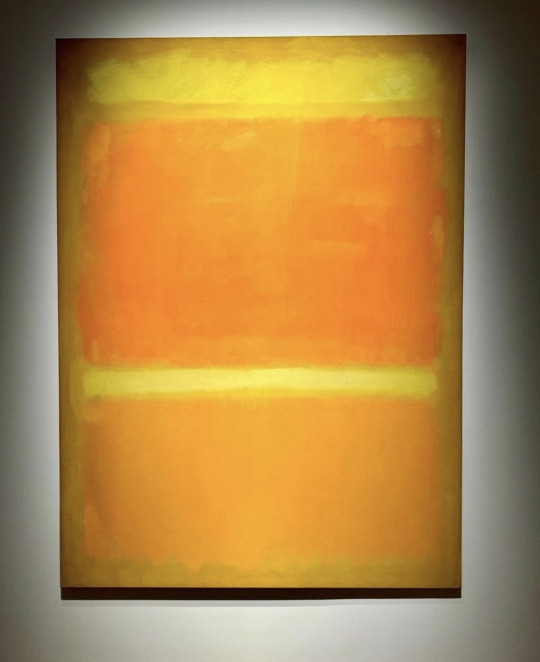
Thank you so much for the question , sorry, as always to prattle on.
#mark rothko#markrothko#rothko#daily rothko#dailyrothko#abstract expressionism#modern art#abstraction#colorfield#ab ex#colorfield painting#mid century#anonymous#questions
132 notes
·
View notes
Text
Knightstone Household: Chapter 9, Part 10


CW: Low level sim spice - Guide to Content Warnings
Silas did not have a good school day. He didn’t want to explain what happened but he got a very sad moodlet. Luckily for him he’d already arranged to have his friends, and fellow aliens, Tyree and Ruth come over after school. It was too cold to do anything outside so the three took over the living room and started a video game battle.


Ruth: Important question, what are you two bringing for show and tell
Tyree: I found this cool leaf that looks like-
Ruth: Boring! As aliens we have to set the standard in cool stuff. Silas can you bring an alien
Silas: What? We’re aliens

Ruth: I meant from your mum’s collection of critters
Silas: Oh, maybe. She doesn’t really like people touching her science stuff
Ruth: You don’t have to ask her, just bring one
Tyree: Like you would steal from your mum’s
Ruth: I would if they had cool stuff for show and tell


Silas: Maybe I should just borrow a geode, Mummy has a bunch. I think she said the whole collection but she never got a collection plaque? I don’t know
Ruth ends up winning the game leaving the boys annoyed. She and Tyree head home while Silas takes a nap until his mum gets home.

Suzanna had a stressful workday and returns home with a bad headache. After waking up Silas she grabs her dinner, Adam votes they eat in the lounge in front of the TV tonight.
Suzanna: Good day?
Adam: I leveled up my guitar skill and Pollock and I sent a book off
Suzanna: That’s great!
Silas: Mummy... can I... have an alien?



Pollock: We aliens
Silas: I know. I mean one of the ones upstairs
Suzanna: Why? As like a pet?
Silas: Not exactly. I’d like to take one for show and tell. Please
Adam: I don’t think that’s a good idea, but your Mum and I will talk okay
Suzanna: You don’t want to take a crystal? We have plenty of those
Silas: Maybe. If I can’t have an alien



Adam and Suzanna worked in tandem that night getting their sons to bed. Adam read Pollock a story while Suzanna sprayed the monster under the bed for Silas. When they got upstairs they got in their sleepwear.
Suzanna: Why don’t you want him taking an alien
Adam: I don’t want us to be the local weirdos
Suzanna: But Adam you know the alien population ratio is high here, that’s why we came
Adam: I know. I just... we got so much unwanted attention as kids. I don’t want that for him


Suzanna: I know but he seems bright and he’s got friends
Adam: So I need to stop being so protective
Suzanna: I wouldn’t tell you that. But he should to be able to share something he’s excited about
Adam: Would any of them even survive a trip to school and back
Suzanna: The porcupine might. I can check with it tomorrow
Adam: For now would you get on the bed, I’ve missed you today. Let me show you how much
Suzanna: I think I’d rather convince you of my view
Adam: I like the sound of that
Suzanna: *giggles* Close your eyes

The next morning Silas can’t wait for his parents to get to the breakfast table. Bringing an alien was Ruth’s idea but he would like to be able to talk about one, his mum has found so many.
Adam: Morning sport
Silas: Daddy did you decide
Suzanna: Your dad wants you to take an alien
Silas: REALLY
Adam: Hold on there are some ground rules. Don’t let anybody else touch it, keep it in your sight and listen to your Mum when she tells you all about it
Silas: Huh



Suzanna: If you want to take one we need to go over my notes first. Otherwise you won’t have anything to say other than what colour it is. Show and tell is Friday right? I should have some time after work tomorrow
Silas: Yes, thanks Mummy, thanks Daddy
He happily washes the breakfast dishes and gets ready for the bus.
Adam: Thanks for convincing me. Anytime you want to do that to me again-
Suzanna: Shh, he’ll hear you! Let him be young and innocent a while longer


Silas headed to the road to wait for the bus to come. Rather than just stand and freeze he decided to make some snow angels. Suzanna meanwhile headed to her garden to harvest and care for the plants. Slowly some were evolving into better plants under her care.


Arriving at work Suzanna was confronted by a grey sky and an angry Shelley.
Shelley: Thank the watcher you are here, I need to talk to you
Suzanna: What about
Shelley: When you had your vacation day-
Suzanna: My son was sick
Shelley: And as a mother of a Silas I sympathise but Faye did not
Suzanna: If you’re going to tell me she hates me I’m well aware


Shelley: Doesn’t that piss you off
Suzanna: It comes with the territory of being an alien
Shelley: She was lording it over me all day, barking orders, I have the same rank as her
Suzanna: I’ll talk to her about it
Shelley: I wouldn’t mind if you did more than just talk

Shelley stormed inside and Suzanna groaned. Personal management was her least favourite part of the job. She just wanted to be a scientist tinkering away but no, since she was “the best” she was expected to control the behaviour of others. She set about her usual morning tasks thinking hard, how could she talk to Faye without it becoming a full on confrontation?



Previous ... Next
#sims 4#the sims#simblr#my sims#ts4#active simblr#R0909#SuzannaKnightstone#AdamKnightstone#SilasKnightstone#PolKnightstone
22 notes
·
View notes
Text
Events 4.8
217 – Roman emperor Caracalla is assassinated and is succeeded by his Praetorian Guard prefect, Marcus Opellius Macrinus. 876 – The Battle of Dayr al-'Aqul saves Baghdad from the Saffarids. 1139 – Roger II of Sicily is excommunicated by Innocent II for supporting Anacletus II as pope for seven years, even though Roger had already publicly recognized Innocent's claim to the papacy. 1232 – Mongol–Jin War: The Mongols begin their siege on Kaifeng, the capital of the Jin dynasty. 1250 – Seventh Crusade: Ayyubids of Egypt capture King Louis IX of France in the Battle of Fariskur. 1271 – In Syria, sultan Baibars conquers the Krak des Chevaliers. 1605 – The city of Oulu, Finland, is founded by Charles IX of Sweden. 1730 – Shearith Israel, the first synagogue in continental North America, is dedicated. 1812 – Czar Alexander I, the Russian Emperor and the Grand Duke of Finland, officially announces the transfer of the status of the Finnish capital from Turku to Helsinki. 1820 – The Venus de Milo is discovered on the Aegean island of Milos. 1832 – Black Hawk War: Around 300 United States 6th Infantry troops leave St. Louis, Missouri to fight the Sauk Native Americans. 1866 – Austro-Prussian War: Italy and Prussia sign a secret alliance against the Austrian Empire. 1886 – William Ewart Gladstone introduces the first Irish Home Rule Bill into the British House of Commons. 1895 – In Pollock v. Farmers' Loan & Trust Co. the Supreme Court of the United States declares unapportioned income tax to be unconstitutional. 1904 – The French Third Republic and the United Kingdom of Great Britain and Ireland sign the Entente cordiale. 1940 – The Central Committee of the Mongolian People's Revolutionary Party elects Yumjaagiin Tsedenbal as General Secretary, marking the beginning of his 44-year-long tenure as de facto leader of Mongolia. 1954 – A Royal Canadian Air Force Canadair Harvard collides with a Trans-Canada Airlines Canadair North Star over Moose Jaw, Saskatchewan, killing 37 people. 1954 – South African Airways Flight 201: A de Havilland DH.106 Comet 1 crashes into the sea during night killing 21 people. 1959 – A team of computer manufacturers, users, and university people led by Grace Hopper meets to discuss the creation of a new programming language that would be called COBOL. 1959 – The Organization of American States drafts an agreement to create the Inter-American Development Bank. 1960 – The Netherlands and West Germany sign an agreement to negotiate the return of German land annexed by the Dutch in return for 280 million German marks as Wiedergutmachung. 1968 – BOAC Flight 712 catches fire shortly after takeoff. As a result of her actions in the accident, Barbara Jane Harrison is awarded a posthumous George Cross, the only GC awarded to a woman in peacetime. 1970 – Bahr El-Baqar primary school bombing: Israeli bombers strike an Egyptian school. Forty-six children are killed. 1974 – Hank Aaron passes Babe Ruth as the all-time leader in career home runs by hitting his 715th home run off of Al Downing at Atlanta-Fulton County Stadium. 1993 – The Space Shuttle Discovery is launched on mission STS-56. 2002 – The Space Shuttle Atlantis is launched on mission STS-110, carrying the S0 truss to the International Space Station. Astronaut Jerry L. Ross also becomes the first person to fly on seven spaceflights. 2005 – A solar eclipse occurs, visible over areas of the Pacific Ocean and Latin American countries such as Costa Rica, Panama, Colombia and Venezuela. 2010 – U.S. President Barack Obama and Russian President Dmitry Medvedev sign the New START Treaty. 2014 – Windows XP reaches its standard End Of Life and is no longer supported. 2020 – Bernie Sanders ends his presidential campaign, leaving Joe Biden as the Democratic Party's nominee. 2024 – Solar eclipse of April 8, 2024: A total solar eclipse takes place at the Moon's ascending node, visible across North America.
0 notes
Text
Ross's List of Objectum (-adjacent) media
I'm occasionally asked on Discord for objectum media, so I'm making this list with stuff I've run into and recommend. This is anything with sentient objects or relationships to objects. I am going to apologize ahead of time that most of these are focused on architecture, since that's what I've mostly been hunting all these years.
List under the read-more.
Books (Fiction)
Your Cities by Anaea Lay. Short story. One of the main characters is dating cities and bringing them and their buildings to life. My absolute favorite short story of all time, not least because my beloved skyscraper plays a major character. Read it here.
I normally don't look at sentient ships in fiction because they are so common and usually aren't of my interest, but I make an exception if the story revolves around them. Turning the Whisper, short story also by Anaea Lay, has a sentient spaceship grieving and remembering his creator, one of the only 'machine-whisperers' in the universe. Read it here.
The Culture series by Iain M. Banks also has a colorful cast of sentient spaceship that I have heard high praise of but I haven't read them myself.
Thistlefoot by GennaRose Nethercott. A re-imagining of the Baba Yaga fairytale following two siblings in America suddenly receiving a sentient, walking house from their Jewish Russian grandmother. WARNING: The main conflict revolves around antisemitism. There are scenes of pogroms. The book does not pull its punches when discussing the horrors of persecution, including right at the opening pages.
Awakening to the Great Sleep War by Gert Jonke. This one can sometimes be hard to find. Stream-of-consciousness novel about an acoustic designer in a surreal, dream-like city, whose profession and training allows him to hear columns and iirc buildings speaking. The main character has a relationship with a column around the end of the book.
Not quite as stream-of-consciousness, but even more chaotic, is The Kraken by China Mieville where one of the main characters is a detective who can sorta speak to inanimate objects. Although with how much is going on in this story it might be a little dwarfed by the other zaniness.
Day 9 by Robert Jeschonek. Between a story of three people trying to find a guy and evade a serial killer, the Sagrada Familia cathedral muses and self reflects and looks forward to the future.
Desire and Dust by Roee Rosen. A small, academic collection of stories/artworks/etc. from Russian authors that mainly focus around objects coming to life and having relationships with humans. Be warned: the first work in the collection is a vent piece against Vladimir Putin, and includes cannibalism and sexual assault. The book goes into NSFW territory throughout.
The Book of Form and Emptiness by Ruth Ozeki. A boy suddenly starts hearing the voices of objects after his father dies, and his mental state quickly spirals with lack of support and understanding. This goes to dark places with mental health, but the book ends well.
The City We Became by N. K. Jemisin. Six people become New York. Literally become the personifications of New York. N. K. Jemisin is one of the best science fiction authors of this decade, go read her work.
On that note, the Skyscraper Throne trilogy by Tom Pollock has the city of London alive and doing young adult urban fantasy schenanigan business, including facing off against the god of cranes who represents gentrification. One of the main characters hunts down a sentient train at the beginning of the novel. Somehow no building characters but it's not like this list is hurting for them.
The Towers Trilogy by Karina Sumner Smith is an adult fantasy/urban fantasy story about two cities segregated between magic users and non-magic users, and involves living skyscrapers powered by magic in the later parts of the first book and throughout the second and third book. While the premise is a bit cliche, it's good.
The Employees by Olga Ravn. The human crew of a spacecraft get enamored by The Alien Cubes (tm) that they picked up on a mission. This is set by a series of vignettes showing different perspectives by humans and robots that man the ship.
Twisted! by Miranda Leek. Roller coasters come to life as monstrous defenders of the theme park. Apparently it is a bit mid but enjoyable.
The Tallest Doll in New York City by Maria Dahvana Headley. Short story where the Chrysler Building and Empire State Building kiss. Read here. Also if you wanna see more spicy building romance, check out the cover of Delirious New York (!!NSFW!! or at least coming close to it. I would not open this at work even if there's nothing explicit) written by Rem Koolhaas and illustrated by Madelon Vriesendorp, who later made her cover artwork into a short film.
Rootabaga Stories: The Two Skyscrapers Who Decided to Have a Child by Carl Sandburg. Self explanatory. Sandburg is one of my favorite poets of all time go go go go read his work. Read the Two Skyscrapers here, and also read his poem about a skyscraper and how it's alive and a poem about how a skyscraper loves the night. I hate to assign modern labels to old dead people but I feel like Sandburg would have been objectum were he alive today.
Also go read the poem The Turbine by Harriet Monroe. The machine is unnamed and unidentified, only so much that it is an industrial machine, but this poem has quite an objectum vibe to it's main character/narrator. Read it here.
Also a poem, and kinda really hard to find in any official capacity, but ship-lovers have The Subject, written by R A B Mitchell, about the warship HMS Warspite that he served on. Here's a way to find it, but you gotta scroll down half a page.
Everyone and their object companion probably already knows about this one but House of Leaves by Mark Z. Danielewski. Unexplainable house that does some freaky geometry business. Best damn horror I have read.
Also covering my bases here with Christine and The Shining, both by Stephen King. Books more so than the movies. Evil car and evil hotel respectively, though you could probably argue until sunrise whether the objects themselves are animate and evil or if its the human ghosts haunting them.
Citizens of No Place: An Architectural Graphic Novel by Jimenez Lai, is a short experimental manga-esque comic musing about the state of architecture and its possible future and criticizing the current path of society. One of the chapters has a character in love with an architectural form. Many thanks to Creatures Are Stirring (mentioned below) for finding and mentioning this. Can be found here.
The Dream of Houses by Wil McCarthy is a sci-fi short story set from the perspective of a friendly smart home as their owner goes through the Worst Day of His Life. It's... a little outdated in the sense of it's hard to look at the sci-fi society McCarthy writes about and take it with the optimism it was supposed to have, but it has some interesting ideas in it. This story does not exist anywhere online, but I have digitized it on my own end. Since it's almost 30 years old and out of print, feel free to send an email to me if you want the digitization.
Les Autos Savages, a short story collection by Folio Junior Science Fiction. Many of the stories in here have sentient/sapient cars as the main characters and comment on the complicated relationships humans have to cars, both good and bad. This is in French, but @drinkingasoline has translated a few of the stories. Thank you btw Crispy for finding this!
There's a short story I keep losing the name of, but if anyone can find it I would graciously appreciate being reminded of its title. It's a vignette set in a broader fantasy universe, and the main character is a human changeling brought over to Fairy New York. The vignette deals with the main character visiting the NYC library, who is personified into a genius loci along with being the building himself. This guy inspired my own building characters so I would love to read about him again.
Books (Non-fiction)
Creatures are Stirring: A Guidebook to Architectural Companionship by Joseph Altshuler and Julia Sedlock. While this is geared more toward architects than the general public, if you want to dip your toes into animist theory and praxis (for lack of a better term) this the best starting point so far, and these two authors are names to know. Both authors are confirmed to be objectum friendly, though this book does not explicitly mention or discuss objectum people. If you don't want to read the entire book but want to hear one of the authors summarizing his thoughts, see the video Are Buildings Alive? hosted by Stewart Hicks interviewing Joseph Altshuler. Viewable here.
On the Animation of the Inorganic by Spyros Papapetros. Really, anything Mr. Papapetros has written if you have the stomach for dry, high-level academic analysis. Fantastic book wrapping up arts, philosophy, and a bit of culture in a discussion of Modernist animism, but it's written in esoteric academic-speak making it inaccessible, and specifically is looking at 1880s-1940s time period. Does not reference objectum people directly but does occasionally mention the "erotic power of objects".
Both of the above books are exhaustively sourced, so you can find jumping off points for your own research. They are architectural theory and will be almost exclusively focused on architecture, although On the Animation of the Inorganic also discusses art and briefly discusses other things as well.
Architectural Agents: The Delusional, Abusive, Addictive Lives of Buildings by Annabel Jane Wharton. A very strong case for discussing buildings as agents, as subjects, able to act on and manipulate humans and animals. This primarily deals with all of the negative ways a building can affect humans, including enabling addiction, but a very strong theoretical basis for architectural agency and perhaps animacy.
Monsters of Architecture by Marco Frascari. Maybe. Another architecture theory book, and one I haven't read thanks to how difficult it is to get a physical copy. Putting it here mostly in case anyone else is as ravenous for animistic theory as I am.
There is a book that looks at agalmatophilia (statue-lovers) that I am aware of, but I heavily do not recommend it as it is hostile toward objectum folk. If you want the name of the book for research or something, send me a DM. I also probably should mention that Erika Eiffel has her biography somewhere but 1) it's in Finnish (iirc?) with no English translation available, and 2) I am not comfortable supporting Erika/her book.
Films
Chairy Tale by Norman McLaren. Also, by the same guy, Opening Speech. Short films. A chair/microphone misbehaves around a man. Chairy Tale ends well for the object, Opening Speech... not so much. I adore McLaren's work, go watch them here (Chairy Tale) and here (Opening Speech).
Roof Sex (!!NSFW!!) by PES. Two couches. A roof. No one around. Really, most of PES's work counts as objectum/animistic-adjacent, although thankfully most of his filmography is safe for work. Roof Sex is just the most obvious one of the bunch. PES himself comes off as having an animistic bent + connection with objects in interviews but I am cautious to call him anything more than that.
Another one everyone here probably already knows of, but Encanto, directed by Byron Howard and Jared Bush. The house. She is alive. And very expressive and friendly. Very good Disney film following a family with super powers but dealing with generational trauma and high expectations. The house is called Casita and is pretty much the best friend of the main character.
Her directed by Spike Jonze. Well known film but covering my bases. A man falls in love with an AI operating system. Saw it recently myself--it's quite good! There is a very brief NSFW objectum eye candy moment aside from the whole premise of the relationship.
AI Love You, directed by David Asavanond and Stephan Zlotescu. Thai film where buildings all have AIs put in them, and one of the buildings falls in love with a human that lives in him. The movie isn't a masterwork of art, it's cheesy as hell, but it's incredibly fun. There's a rave building that has a giant architectural mohawk. We deserve mid-but-fun movies.
Titane, directed by Julia Ducournau. This one's for all of the mechaphiles out there. I haven't watched this one either but the main character has a baby with a car. The main character is also the villain, and it is a slasher film, so be aware of that.
Jumbo, directed by Zoe Wittock. Human falls in love with a theme park ride. This is directly an objectum story. I haven't watched it myself (somehow...) but a friend has mentioned that it contains sexual assault, coercian, parental abuse, and apparently it ends sadly :(
Monster House, directed by Gil Kenan. Self explanatory and everyone here's probably already heard about it.
Just gonna mention Electric Dreams by Steve Barron to cover my bases but I don't think you can get by a week in the objectum community without having heard of that film.
Home Sweet Home by S. Paccolat, A. Diaz, P. Clenet, and R. Mazevet. A suburban home uproots itself to go on an adventure. Can be found here.
Autos Portraits by Claude Cloutier. Animated short film with a biting satire of car-dominated modern society, with a singing animate car as the center piece. NSFW! Thank you again @drinkingasoline for finding this one.
Theater
Inanimate by Nick Robideau. Local woman falls in love with Dairy Queen sign. Rest of town doesn't approve. Ends well, but the main character has to deal with ableism and objectophobia. Recently played at Theatre Wit in Chicago. Nick is confirmed to be objectum-friendly and appreciates people reaching out. The script can be bought here.
Objects of Her Affection by Marsian De Lellis. Local woman falls in love with various tragic objects and reflects on her life. Content warning: this does not end well for the woman or the objects. Marsian is confirmed to be objectum-friendly, but the play uses a lot of dark humor and in general goes a lot of dark places. Watch only if you know you can handle it. Read more and see clips here.
Erika's Wall by Sophie Jaff. To be honest I barely know anything about this, it ran before my time in the OS community, but a song from the play survives. Listen to it here.
Other
Sentient ship-lovers, go listen to Julia Ecklar's Iron Mistress, about a pilot lamenting and praising her love of her spaceship! And also The Phoenix, about a human soul reborn into a space shuttle. Listen to Iron Mistress here, and The Phoenix here. Sorry that quality is so poor but it's hard to find good recordings of these things.
Everything is Alive podcast by Ian Chillag. The host interviews a score of inanimate objects. The elevator episode briefly goes into objectum territory on the side of the object. Listen to it here.
If you liked Norman McLaren's "Opening Speech", also check out this clip of ventriloquist Ronn Lucas having a bit of a fight with his microphone. See it here, with the timestamp set to start when he actually begins his act.
--
If you're wondering how I have so many reccs, I have been hunting objectum and machine-animistic media for over 10 years now. Waving hello at everyone who can immediately identify me based off of mentioning Your Cities and On the Animation of the Inorganic.
I'll edit this post as I find or remember more things. Please feel free to add to this through reblogs or make your own list!
Pinging @objectum-media to request these get added to the archive (also please add both Sense of Longing and Handle With Care on there if you have time).
Additionally: Some of these pieces are at risk of being lost since they are niche. If you've enjoyed any of these works, I would like to ask you to preserve it on your own computer or get a physical copy or what have you, so these things can come back even if they were to be removed by the internet. I lost an excellent play script about a man who befriended the Twin Towers because the author went dark and deleted all of his work, and I constantly lament that I couldn't save it. Keep circulating the tapes.
63 notes
·
View notes
Photo

Swedish fireplace (kakelugn) by Ruth Pollock. Another photo of a dollhouse miniature I haven’t been able to find a larger version of. I think it originally came from Swan House Miniatures - this one is sold and gone, but they have other miniatures by her.
3 notes
·
View notes
Photo
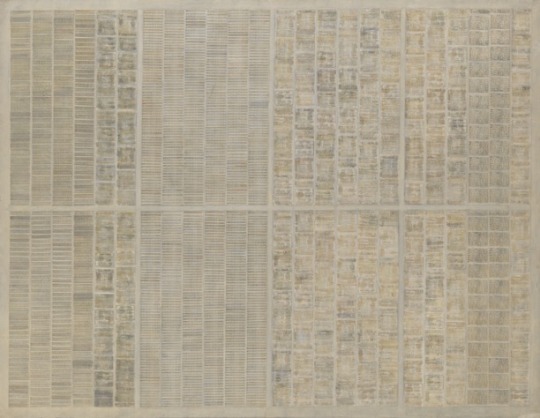
THE FRIDAY PIC is “Newspaper No. 3,” a 1961 work by the artist known as Chryssa, from a wonderful series where she took bits of discarded printing plates from the newspaper industry and stamped their images onto her paintings. The piece is from the Guggenheim’s collection, and is now in the long, long overdue show called “Chryssa & New York,” at the Dia Art Foundation space in Chelsea. I gave a lecture there last night on the important relationship between early-’60s works by Chryssa and by Warhol.
Here — in rather telegraphic form, I’m afraid — are some of the ideas I proposed:
1) That Chryssa, a rising art-star with a Guggenheim solo in the fall of ‘61, had a direct influence on Warhol, still completely unknown. And that this influence centered on an “alloverism” that took details direct from the world and spread them evenly across the surface of a picture.

2) That in postwar American culture, this alloverism was strongly associated with femininity and female creativity. Lucy Lippard, answering the question of whether there was such a thing as “woman’s art,” cited “a uniform density or over-all texture, often sensuously tactile and repetitive to the point of obsession” — as she would have seen in works by Chryssa but also by Yayoi Kusama, Ruth Asawa, Agnes Martin, Louise Nevelson and others. (Not of course because they were born with two X chromosomes, but because they were gendered female at that particular moment in Western culture.)
3) That Warhol could adopt such a feminine aesthetic as a counter-establishment, avant-gardist move that was also wrapped up in what his homosexual identity meant — to him and to straights — at that moment in cultural history.

4) That this “feminine” alloverism was closely linked to ideas about textiles and the decorative — concepts that threatened the manliness of what passed as “serious” fine art at the time. In a Life magazine roundtable that discussed a Jackson Pollock painting, doubters compared it to “enchanting printed silk,” to “a pleasant design for a necktie” and to “a panel for wallpaper” — all code for “it looks too feminine.” Which many AbEx paintings manifestly did, by the standards of the time — hence the exaggerated machismo adopted by Pollock and his defender Clement Greenberg, as a defensive move. “That such pictures should escape collapsing into decoration, mere wallpaper patterns, is one of the miracles of art in our age,” said Greenberg, with a good dose of special pleading. (And yet Greenberg chose to title one of his favorite Pollocks “Lavender Mist” — the name also of a pale purple flower very popular at the time.)
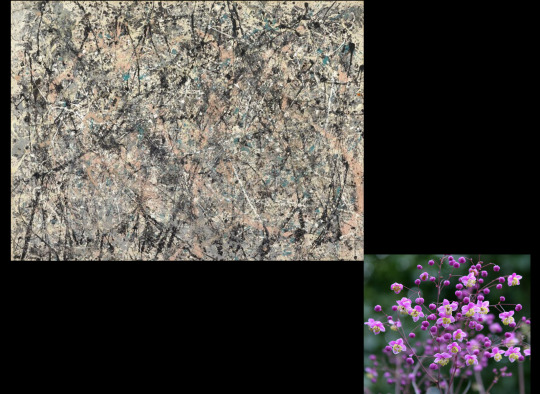
5) That, in 1961, Chryssa took up the challenge presented by an alloverism that was derided by the male art establishment for being tied to decorative “women’s work.” And she did that by daring to bring her feminine alloverism into collision with the all-male culture of the American newspaper.
Chryssa always talked about her first encounter with the “vulgarity” of Times Square — then still the home of the New York Times — and about how it led to her artistic awakening. The landmark series of newspaper paintings that came out of that encounter show Chryssa proudly planting her flag — a cloth allover covered in patterns — in the midst of that distinctly masculine vulgarity.
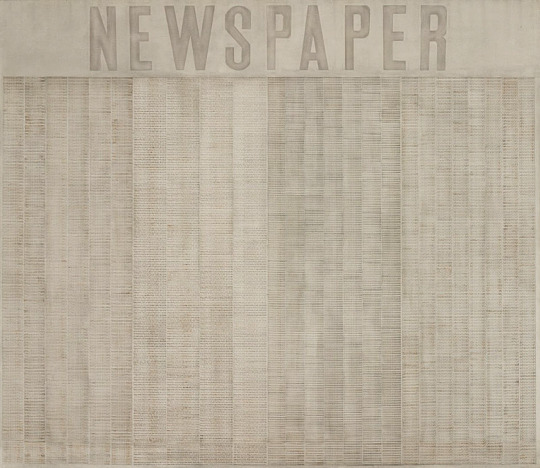
31 notes
·
View notes
Photo










Betty Parsons (1900-1982) is the legendary dealer who, after opening her gallery in 1946, gave shows to Barnett Newman, Jackson Pollock, Mark Rothko, Bradley Walker Tomlin, Ad Reinhardt, Agnes Martin, and Clyfford Still. For me, she was legendary for different reasons — she showed Forrest Bess, Calvert Coggeshall, Leon Polk Smith, Walter Murch, Ruth Vollmer, Sonja Sekula, and Kenzo Okada — artists who never gained the spotlight in their lifetime. You could see work by the first generation of Abstract Expressionists outside New York in those days, but you had to come to New York to learn about Bess, Coggeshall, and the others. Richard Tuttle, Thomas Nozkowski, and Jack Tilton worked for Parsons, which shows how many different generations she intersected and recognized.
As an artist, Parsons is part of the story that is conveniently overlooked, which puts her in the unenviable position of being both legendary and under the radar. It cannot have been easy, especially since most of the Abstract Expressionists left her for bigger dealers once they started getting attention. By John Yau.
Read more https://hyperallergic.com/.../betty-parsons-invisible.../
100 notes
·
View notes
Photo
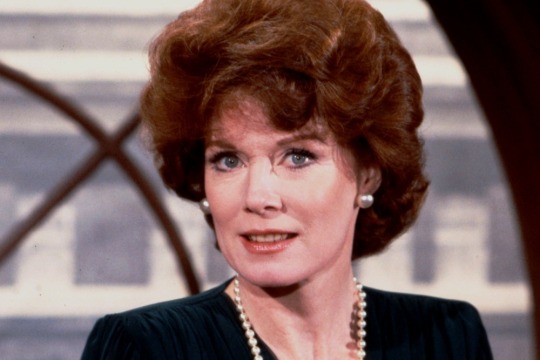
Ann Flood (born Maryanne Elizabeth Ott; November 12, 1932 or 1934 – October 7, 2022) Actress, best known for her role as journalist and author Nancy Pollock Karr in the soap opera The Edge of Night, a role she began in 1962. Flood portrayed the show's heroine for 22 years, witnessing the show's transition from live to taped broadcasts and its move from CBS to ABC.
Flood became a regular performer on golden age live TV shows, including Sergeant Bilko, Armstrong Circle Theatre, Kraft Theatre, and The Philco Television Playhouse. She was also known for roles in various commercials, including those for Good Seasons salad dressing, Newport cigarettes, Ivory Snow detergent, and Sterling beer. Before starting on The Edge of Night, she played the leading role of another journalist, Elizabeth "Liz" Fraser Allen in the soap opera From These Roots (1958–61).
In The Edge of Night, Nancy's marriage to Mike Karr remains as one of the longest in soap history. Nancy and Mike had no children of their own, but the character of Laurie (Mike's daughter by his first wife Sara) came to consider Nancy as her mother. Flood continued in the role through the series' finale in 1984, by which time she was the show's longest-serving cast member.
For her work on the show, Flood was twice nominated for the Daytime Emmy Award in the category of Outstanding Lead Actress in a Drama Series, in 1982 and 1984.
After Edge of Night, Flood continued to act in daytime dramas. She was cast in a succession of shorter-term and recurring roles, playing Ella Hobbs, a villain on Search for Tomorrow, who tried to kill the show's leading character, Joanne, and played a variety of society matrons on Another World (Rose Livingston, 1986–1987), One Life to Live (Mrs. Guthrie, 1991), and As the World Turns, recurring from 1992 to 1993 as business executive Ruth Mansfield. In 1987, she joined the cast of All My Children playing the recurring role of Bitsy Davidson, Cecily's snooty mother, and was briefly under contract to the show. Her last appearance aired in January 1990.
Other work included guest-starring roles in prime-time TV programs such as The Cosby Show, and a role in the 1988 feature film, Mystic Pizza. (Wikipedia)
#Ann Flood#TV#Obit#Obituary#O2022#The Edge of Night#From These Roots#Search for Tomorrow#Another World#As The World Turns#All My Children
11 notes
·
View notes
Photo




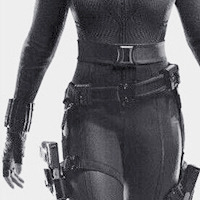
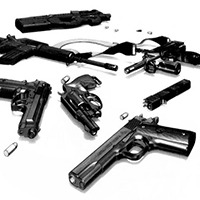
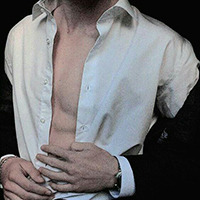


Starker 007 AU >>
---------------------
The painting is hideous, there are no two ways about it.
The longer Tony stares at it trying to find a justification for the thirteen-thousand dollar price tag, the more dumbfounded he becomes. Affixed to the wall it presents like a gaudy canvas banner, a bewildering clutter of haphazard spills and splotches that might have a certain panache adorning the walls of the penthouse of the pretentious elite, but Tony can’t make sense of it.
The gallery is lined with paintings of a similar aesthetic, abstracts that look like psychedelic blood-spatters, moody self-portraits and ten-feet-tall modernism canvas of writhing, spaghetti-lines that looks like it belongs in a first grade art class.
Maybe Tony is a simpleton, but he has at least some taste.
A man slips beside Tony to observe the painting, head tilted up to peer at the artwork in quiet consideration. Outside the corner of his vision Tony can tell the man is stunning. Suit expertly tailored, the sharp lines of his jaw and cheekbones beautifully chiseled, milky skin brushed with a hint of gold and long, long that fingers that wrap around a perspiring glass of Sauvignon Blanc.
Tony sips his whiskey, a smooth burn down his throat as his interest is piqued. He’s seen a hundred, a thousand of men just like this one - well dressed and impeccably styled - but however girt by the exquisitely woven threads he may be, the unconscious tug of the mans smile seems genuine in partner with the down-to-earth brown of his eyes. He’s beautiful but doesn’t flaunt it.
It takes only a beat for the man to notice Tony’s staring, the mellow harmonic chords of the piano lulling away in the near distance. He offers a shy smile at the attention, turning his gaze back to the painting to resume his quiet scrutiny, eyes flickering over the slapdash strokes.
Oh yes, Tony thinks. He’ll do just nicely.
He clears his throat roughly, catching the startled gaze of the younger man, mouth falling open in quiet surprise.
“Stark,” Tony introduces himself, holding his hand out in greeting. The man's grip is pleasingly firm when he shakes Tony’s hand after a moment's still contemplation.
“Parker,” the man smiles, eyes crinkling adorably at the sides. “Peter Parker.”
He tries to not find himself charmed by the way the hairs of one of Peters’ eyebrows are swept skyward like he’d rubbed his face, or the way his long fingers tap at the stem of his wine glass as he sips from it, licking his bottom lip to catch a wayward drop.
“What brings you here, Mr. Parker?” Tony inquires, surreptitiously tracing temple of his glasses to activate the sensors built within them.
His vision goes blue for a prolonged moment as the AI brings up schematics and data in a blinding stream of text and symbols. Another tap has EDITH zeroing in on the younger man, registering his heat signature in blistering oranges, his recent social media and his squeaky-clean criminal record.
PETER BENJAMIN PARKER
24 YEARS OLD
PLACE OF RESIDENCE: QUEENS, NEW YORK, UNITED STATES. CITIZEN OF THE UNITED STATES OF AMERICA
CIVILIAN
A quick skim of the hurried cascade of information informs Tony that Peter was tardy eight times in high school and is now currently an engineer for Oscorp.
That’s a shame. Tony guesses being pretty doesn’t account for taste.
“My employer is a patron of the arts,” Peter smiles. “What about you Mr. Stark? Is this business or pleasure?” He gestures with his half-empty glass to the sea of people, a motley swarm of greasy politicians, haughty high-flyers and glittering socialites.
“A smart man finds a way to do both at the same time,” Tony winks, giving the younger man a deliberately slow once over, warming the hollow patch behind his ribs when the man's cheeks bloom pink. Peters eyes drops to Tony’s lips when he licks the residue of whiskey off them, lingering there for just a moment before politely looking away.
Play indeed. Sure, the auction for the artworks is set to begin at any moment and Tony’s mark is idling somewhere in the background - but there is always time to enjoy himself, Tony justifies as he turns in towards Peter and gives his best charm.
Potts always did drone on to him about having a proper work-life balance.
“What do you think?” Tony asks, pointing to the abstract artwork, analysing Peter as he breaks from their stare and assesses the nervous mess of brown and splintering white acrylic.
“The Delicate Spider,” the man orates expertly, not missing a beat. “Ruth Bauer Neustadter.”
“Wow, just rolls right off your tongue there,” Tony blinks, mildly impressed. “You some kind of art aficionado or something?”
“Nah, I just like spiders,” Peter shrugs, looking over the piece appreciatively. “What about you, Mr. Stark?”
“Me? No thank you to anything with more than four legs and whatever this is,” Tony says truthfully, lifting his hands sheepishly. “Although I couldn’t tell the difference between a Pollock or a Picasso if you paid me, so.”
Peter seems amused, the corners of his lips twitching upwards as he rocks on his feet. He’s adorable and would look far more inspired contrasted against Tony’s black silk bedsheets than any one of these works of art.
“That’s a shame, Mr. Stark.”
“It is,” Tony concedes with a smirk. “It’s a very hard life being so uncultured.”
“I can tell. Maybe I can give you an education some time.”
Tony grins, catching Peter’s gaze. “I’d like that very much Mr. Parker.”
The spell is abruptly broken when the interface of Peters smartwatch lights up, distracting them both. He looks to Tony sheepishly after reading its contents, using his pinky to tap away at it. The wriggle of the small finger shouldn’t be charming, honestly.
“Ah, I’m afraid I must be heading out, Mr. Stark. Auction’s starting.”
Damn.
“Don’t let me hold you,” Tony supplicates, raising his glass to him, even if he is sad to see him go.”It was a pleasure.”
He can’t help the quirk of his lips at the word, nodding politely at the other man whose smile is tinged with regret this time, and the modest sweep of his gaze over Tony’s body tells him everything he needs to know.
Not that it matters, when a warning red flashes alarmingly over his smart-glasses. His mark is moving, which means he needs to get moving himself.
“Pleasure’s all mine, Mr. Stark.”
“Call me Tony,” he calls out when the younger man waves and moves to leave, offering a roguish smile. “Maybe we can catch up afterwards. Get a start on that education.”
A chestnut curl falls delicately over Peter’s forehead when he turns to peer back at him. “Maybe,” he nods, waving again before departing for good.
He takes only a second to leer at the generous swell of Peter’s ass and mourn the missed opportunity, sighing to himself. This is what he gets for having a bonafide actual work ethic - if he were any of his sloppy, bone-headed colleagues he’d have had his tongue buried in that ass five minutes ago.
Nonetheless once he’s out of sight Tony taps his glasses again, following the transparent map that pinpoints where his mark is.
He’s got a job to do.
------------
Neil McGarrett was a wealthy, eccentric billionaire. A media mogul who made his fortune from humble beginnings, starting from the sale of a single newspaper and now has his name splashed over his own cable news network.
Decidedly right-leaning, McGarrett had an inclination of sensationalism over what some might traditionally label journalism, but it was undeniable that he was favoured by the republican voters in droves, if prime-time ratings were anything to go by.
The man regularly made headlines himself - from his sixth marriage falling apart, to his more unsavoury public affairs. Being photographed naked whilst snorting cocaine on his ten million dollar yacht every other week was commonplace. He’d been photographed dining with sex-offenders and simpering politicians and the wall street elite, caught on film talking about underage women and applauded for it by his peers.
He was a misogynist and a xenophobe and all of supporters loved him for it, dressing it up nice and pretty in what they called classic American values.
For all of his questionable morality McGarrett was also a patron of multiple charities. He gave his time and money to various causes, was caught strolling the red carpet of many a gala and fundraiser and, sometimes, on occasion held a fundraiser - or an auction - of his own.
And that leads Tony to his current assignment, dressed to the nines and brushing shoulders with the obscenely wealthy, pretending like he knows a damn thing about art.
McGarret had decided to generously place a portion of his infamous art collection up for auction and donate the earnings to charity - for the veterans, he had proclaimed, an endearing cause no one could fault him for - even if the charity receiving the funds was for-profit and only repurposed fifteen percent of their donations to actual veterans and its founder was vitriolically transphobic.
It only makes the reconnaissance that much more satisfying.
One of those sparkly big names that McGarret had been associated with was one Justin Hammer, a weapons developer. Whilst the two have little outward affiliation outside the sphere of the billionaire-boys-club, government intelligence suggested that their association may be something more than meets the eye.
Which led to Tony’s mission, scouring McGarrets’ Manhattan abode and gathering evidence that would confirm him as an accomplice to Hammer - the latter of whom was suspected to be selling arms to small island nations and aiming them squarely at American soil.
Innocuous on the surface, they already knew McGarret paid for someone to disguise the transactions between the island nations and oil rich company executives, the media mogul looking to make a quick buck out of warfare and the ad space of the top rating morning program breaking news of an attack on American allies. Shockingly that top rating morning news program ran on McGarrets cable network and more of a ‘surprise’ was that McGarret owned stock in those oil companies and in Hammer Industries.
The auction is a perfect setup for a distraction. McGarret, the mark, will be entertaining his guests, the crowd will have another focus and security will be concentrating on protecting the artworks.
And Tony will be helping himself to some Saturday night intelligence gathering and infiltration. Perfect.
When he starts hearing the raucous bids from the ballroom it’s time for Tony to start moving.
He nods at various dignitaries, toasts to inebriated politicians as he wanders from hall to hall, politely acknowledging the lingering bedroom-eyes men and women cast upon him as he passes, Glock 26 rubbing against his lower back as his hips sway into the heart of the building.
EDITH guides him to the third storey to a plain-looking room down the hall where McGarrets office is located and fewer people are found. The office doors are lined with the kevlar and shotguns of three men, each eyeing Tony with suspicion when he approaches with a teeth-baring grin.
Holding his hands up in mock surrender Tony winks, incapacitating the armed guards with a flash of his palm-central gauntlets, tutting to himself as they slump to the ground in an ungraceful heap.
Whilst he missed the old days of a good pistol-whip or an elbow to the face, there was a particular poetry to the flash and efficiency of the new tech. A certain je ne sais quoi in watching grown men crumple like a house of cards with the twitch of Tony’s fingers.
The EDITH glasses are the only development that Potts has allowed him to bring on field - which is honestly a travesty, however experimental and unregulated his tech is they’re missing out - it’s why they hired him after all.
With a grateful pat to the unmoving hip of one of the guards Tony delicately plucks the access pass from their belt and has EDITH check their vitals.
The little red light turns green when Tony presses the pass against the reader, lock unlatching with a quiet, electronic whir.
The room is dark when Tony enters, lit dimly in a sickly yellow glow by two standing floor lamps. The blinds are drawn, slivers of pale moonlight streaking across the desk as Tony approaches it.
There’s a photo frame on the desk of McGarrett and a busty blonde with her arms around him, fingerprints all over the glass. When Tony picks it up for better inspection his fingers come away suspiciously sticky.
Gross.
Wiping his hands on his suit Tony fishes out the USB from his pocket and leans over to place it in the processing unit of the desktop computer. The monitor awakens in a bright technicolour glow as the tech works it’s magic, hacking itself into the system and retrieving the data, storing it not only on the USB itself but transmitting it back to base wirelessly.
All Tony has to do now is wait for the download to complete, mourning to himself how frightfully boring it is when missions go this easy.
It’s hard being efficient sometimes, he muses, wondering where McGarrett stores his scotch and if he’d notice if Tony helped himself to some.
“EDITH, how long since the download commenced?”
“Three minutes, twelve seconds, sir.”
Tony groans, already bored. Maybe he can join the afterparty and get inappropriate with one of the Victoria’s Secret models on the guest list.
He sighs, turning to face the window - only to be surprised when someone behind him punches him in the face.
“Wha?” he manages, slumping against the desk momentarily as his vision spins, head pounding. He doesn’t have time for any reprieve however as his assailant lunges forward to attack him again - Tony barely manages to duck, aiming an elbow at the tall figure and making contact with their face.
It’s hard to be sure in the dark but the figure appears slight, but masculine and he recovers fast, charging forward to grip the lapels of Tony’s jacket in his hands. He pulls Tony forward and moves a leg upwards to knee Tony hard in the stomach.
The pain steals his breath but only riles Tony up, shooting his fist out to swiftly sock the other man in the throat, slamming his head down against the other guys skull.
It’s enough to release his grip and Tony uses his bulk to crowd the other man against the windows, head throbbing. One hand shoots out to wrap around his attackers throat, the other reaching for his glock and pressing against the mans temple.
Even with a gun pointed at him, the man struggles against his grip, kicking his legs out ineffectually in an attempt to gain the upper hand.
The movements shift the blinds open for enough street light to bleed in, illuminating the attackers face, young features twisted in a snarl.
“You,” Tony muses, blinking in surprise.
It’s the man from before - Peter Parker.
Except, all his previous air of innocence has all but dissipated, brown eyes cold and calculating.
It’s a mistake to look.
Peter uses Tony’s startled pause to knock the gun away and out of Tony’s hands with surprising strength, slipping free from the chokehold with a kick to Tony’s ribs.
Goddamn that fucker is quick, Tony thinks as he stumbles back, clutching his side.
“When I said we should catch up later this isn’t exactly what I had in mind,” Tony snarks, dodging another fist to the face.
With a twist of his body he sweeps his legs out at Peter’s shins, the smaller man falling to the ground in a kneel.
“What, a little late night espionage not romantic enough for you?” Peter retorts, whipping a pistol out from his jacket and aiming it at Tony’s chest.
Tony acts quickly, legs moving on instinct as a well placed kick flings the weapon away.
There’s a split second where Tony gets distracted because outraged pout on the man's face is adorable - it’s however shortlived, when Peter rushes at him, clocking him upside the jaw as they tumble to the ground in a heap, their weapons discarded somewhere to the side. The two wrestle for dominance, rolling over the floorboards, elbows flying as they try to one up one another.
Tony gets another fist to his face and immediately tastes copper in his mouth.
“On the contrary,” Tony groans, using his weight to roll over the younger man, straddling his slim waist to hold him down. “Sounds like a perfect date.”
“I don’t date thugs.”
“Well that’s just a shame, here I thought we had something,” Tony tuts patiently, pressing his thumbs against Peter’s windpipe, the younger man gasping for air as he bucks his hips upwards to try dislodge Tony.
“So, who do you work for, Peter Parker? Hmm, you one of Hammers’ goons?”
Peter’s face goes pink, eyes bulging as his airway is cut off. He scrabbles at Tony’s wrists and tries to take another swing at him only for Tony to press down further.
“What makes you think I work for anybody,” Peter snarks back, bucking his hips as Tony presses him further into the ground.
And, oh. That should not feel as good as it does, Tony thinks as Peter writhes underneath him. The younger mans’ back arches pleasingly as he tries to gain leverage, biting his bottom lip as he chokes.
“For one,” Tony comments, moving his hand from Peter’s throat to grip his wrists, “these little bracelets you have here are definitely off-market and two,” he tilts his head towards the open air-vent in the ceiling, “you definitely weren’t invited in here.”
Tony abruptly finds his back to the floor when, in lieu of answering and in a truly impressive feat of flexibility, Peter brings his legs up from behind Tony to wrap them around his chest.
Using the new leverage, Peter reverses their positions, using the strength of his thighs to slam Tony’s torso to the ground, his arms in a bind against his chest. On top, Peter straddles Tony’s hips, seating himself right over Tony’s groin.
Dazed, Tony tries to not be attracted to the way Peter looks when he retrieves a small dagger from his suit and holds it to his neck, the sharp tip grazing his vulnerable skin. Tony’s hips roll anyway.
“Are you getting hard from this?” Peter hisses incredulously, holding the dagger lengthways along Tony’s throat column.
The metal is warm from Peters body when Tony swallows roughly, throat bobbing against the dagger. Goddamn he’s here to do a job.
“I refuse to take the blame for that. I mean, it’s not everyday that I get my ass kicked by someone so pretty and snarly,” Tony admits, looking skyward for some kind of means of escape. “Even if they’re a petty criminal.”
“Petty -- “, Peter cuts himself off with a growl - and god that’s hot too - reaching back into his jacket pocket to fish out a leather-bound badge, shoving it against Tony’s glasses.
“FBI, asshole.”
Of course he’s a fed.
Tony laughs, muscles going lax despite the weapon aimed at his throat.
“You’ll have to do better than that, sweetheart,” Tony drawls, ease trickling down his spine as EDITH verifies the badge.
“What’s that supposed to mean? Who are you --”
“CIA Special Agent Tony Stark,” Tony talks over him, “Also referred to as TS007 - and that’s my dick you’re grinding on.”
Peter looks down at his own slow rolling hips in surprise, still pointing the dagger at Tony as he rises up on his knees to put some distance between them.
“Show me your badge so I know you’re not full of shit,” Peter demands, lips turned downward in a disbelieving frown. Tony smirks as he complies, retrieving his battered badge from his pocket and waving it aloofly in Peters’ face.
It seems to do the trick. Peter stands to let him up, still looking at him dubiously.
Tony grunts as he stands, back aching and head pounding, all his new wounds becoming known as the adrenaline subsides. He tries for a cocky grin but a sharp pain makes him wince at the action. He licks over a welt on his lip where it swells on one side.
He thanks Peter quietly when he retrieves both of their guns from the floor, passing Tony’s over.
“What are the suits doing here?” Tony prods, lifting his thumb to his lip to stem the blood. When it comes away wet he sticks it into his mouth, lapping at the metallic taste.
“That’s, uh -” Peter stutters, eyes on the digit in Tony’s mouth, “ - that’s classified. What are the CIA --”
“Also classified,” Tony smirks. It’s true, but it’s also fun to watch the muscle in Peter’s jaw clench in petulant frustration. The younger man turns towards him and taps his smartwatch again, fingers flying over the interface as he types in a code at breakneck speed.
“What division are you in?” Tony queries, siding up next to the younger man, looking surreptitiously at the USB that still appears to be downloading.
“That’s classified,” Peter mumbles, adjusting what appears to be a well-hidden earpiece with his other hand, body slumping as the fight goes out of him.
“You’re a bit young to be a field agent, aren't you?” Tony presses, EDITH catching a swarm of heat signatures outside of the room down the hall.
Peter scoffs. “I have a particularly special skill set - and before you ask, that too is classified. ”
His irateness only makes Tony grin, reaching over the desk to switch on the desk lamp so he can see the guy better. Peters curls are in disarray, his cheek is already beginning to bruise and Tony can see where his own handprints have burst the capillaries on Peter’s pale throat. God, he’s a fucking vision.
“A man of mystery, huh? So secretive, I mean not that that’s a negative trait whatsoever, I can certainly get behind that.“
“Do you always flirt on the job?” Peter queries with a frown, but nonetheless spreads his legs slightly when Tony moves to shift between them.
“Only when I have a beauty like you in front of me, darling. You’re a real distraction, anyone ever tell you that?”
“And you’re a shameless old man,” Peter counters. “Anyone ever tell you that?”
“I already told you my policy on mixing business and pleasure,” Tony nods shamelessly, slides his hands up Peter’s thighs. “What can I say? I’m multi-talented.”
“You’re arrogant.”
“You like it.”
“I have a job to finish,” Peter parries, even as an unwilling grin stretches over his face.
The mood is broken when the heat signatures draw closer and sudden yelling is heard outside as the bodies Tony left at the door are discovered.
Peter peers at the door confusedly, crouching slightly to plant what looks like a listening device on the underside of the desk. There’s a commotion of footsteps and raised voices, someone is yelling to hand them over an access pass.
They’re going to have to act quick.
“We’ve got guests,” Tony turns to Peter, grabbing him by the lapels of his jacket and dragging him close. “We’re going to need a diversion.”
The look he receives is unbridled bewilderment as the younger man stumbles into Tony, and for the first time he can appreciate the clean smell of sweat and copper and aftershave from the younger man.
“What are you --” is all Peter gets out before Tony reels him in and kisses him.
Peter’s surprised hum is swallowed by Tony’s lips and he goes rigid for just a second before he snaps into action.
Strong hands grip Tony’s hips, driving him backwards against the desk. The sharp maple edge digs painfully into his lower back as Peter presses against him, slipping his tongue into Tony’s mouth as he boxes him in. The press of Peter’s body against his feels fucking incredible when he moves, all ridged muscle as he presses them chest-to-chest, biting on Tony’s lower lip as he takes control of the kiss.
“Fuck, kid,” Tony breathes, snaking a hand down to cup Peters ass through his slacks, bringing their bodies closer together until Tony can feel that Peter too is just as hard as him. Tony gets lost in the small groan Peter breathes into his mouth, the kiss growing steadily sloppier as the voices grow louder.
The door flies open and the click of multiple guns loading breaks their lip-lock.
“Oh no, how embarrassing.” Tony gasps, pretending to act shocked as the room fills with armed men. “We’re so sorry - as you can tell we needed a room.”
“Put your hands up!” One man yells, readjusting his grip on his gun.
“Great diversion,” Peter mumbles against Tony’s lips, eyes flicking to his periphery as he slowly inches away.
“It was worth a shot,” Tony smiles crookedly, assessing the situation. A number of armed men surround them, firearms aimed squarely at the duo. Going by their uniform they look like untrained goons, security for hire rather than any law enforcement. Perfect. Tony hates paperwork.
“You’ve got four at your six o’clock,” Peter mutters, shuffling discretely retrieve his pistol from his pocket, resting it against Tony’s thigh.
“You’ve got six,” Tony comments quietly, sliding his hand to grip his own glock in his pocket. “Not to gloat, but I think I can take out more than you, shortstack.”
“I said put your goddamn hands up!” The same man yells.
Peter looks delighted by the challenge. The two quickly shuffle so they’re back to back, facing the circle of pointed firearms.
“Loser pays for dinner?” Peter asks.
Tony smirks, raising his gun and gauntlet at the same time Peter raises his.
“Deal.”
889 notes
·
View notes
Text
Maxwell Bodenheim

In Letters from Bohemia, Ben Hecht declares his friend Maxwell Bodenheim “more disliked, derided, denounced, beaten up, and kicked down more flights of stairs than any poet of whom I have heard or read.” In his lifetime Bodenheim was at least as well known for his drunk and dissolute behavior as for his writing. Today he’s mostly remembered for the tawdry way he died.
He grew up poor and Jewish in smalltown Mississippi. He was bright but viciously boorish, physically handsome yet repulsively slovenly, and argumentative to a fault, with a genius for the insult that could end any discussion, usually with his being punched in the mouth. As young men Bodenheim and Hecht were the pranksters of the Chicago Renaissance. According to Allen Churchill’s The Improper Bohemians, they once filled a hall for a literary debate on the topic “Resolved: That People Who Attend Literary Debates Are Imbeciles.”
Hecht strode center-stage to announce that he would take the affirmative. Then he stated, “The affirmative rests.” Bodenheim shambled forward, scrutinized his confident opponent, and said, “You win.”
Bodenheim – Bogie to his long-suffering friends – was twenty-two when he blew into Greenwich Village with other Chicago émigrés in 1915, and instantly made a name for himself in the neighborhood as a poet of promise. Reading his facile, gaudy verses now, it’s easy to think that it was the brute force of his sociopathic presence, rather than his poetry, that convinced the best poets in the Village at the time that he was one of them, potentially even the greatest of them:
You have a morning-glory face
Whose edges are sensitive to light
And curl in beneath the burden of a smile.
Remembered silence returns to the morning-glory
And lattices its curves
With shades of golden reverberations.
Then the morning-glory’s heart careens to loves
Whose scent beats on the sky-walls of your soul.
Tellingly, those not directly in his orbit seem not to have been fooled by the clever romance-novel sham of such verses – and neither, apparently, was Bodenheim himself, though he would go on roaring about his genius for decades. Hecht records that after entering 223 poetry contests and failing to win a single one, he took to signing his letters to editors “Maxwell Bodenheim, 224th ranking U.S.A. poet.”
He did have a real talent for scandal, easy enough to generate during Greenwich Village’s prolonged drunken orgy in the Prohibition years. His haughty, insulting demeanor, and his habit of trying to steal other men’s women right under their noses, got him regularly socked on the jaw and thrown out of bars, soirees and the fauxhemian revels at Webster Hall.
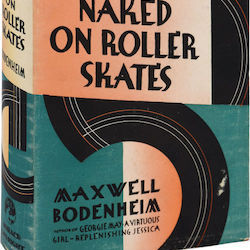
Turning from poetry to prose, through the 1920s he wrote a string of best-selling, sensational potboilers like Replenishing Jessica, about a free-loving bohemian, Georgie May, about a fallen prostitute, and Naked on Roller Skates, about a middle-aged “onetime hobo, circus-pegger, doughboy, sailor, anarchist, con man, all-time sensationalist and wanderer of the world” who leaves a small town with a much younger woman who “wanted to try everything at least once.” They sound better than they read. Hecht called them “hack work with flashes of tenderness, wit, and truth in them.” When the Society for the Suppression of Vice brought Bodenheim to trial in 1925 on an obscenity charge for Replenishing Jessica, his defense lawyer used a familiar tactic of demanding that the prosecutor read the entire text aloud to prove his case. Judge, jury and the reporters covering the trial dozed as the prosecutor droned on and on, and the unaroused jury voted Bodenheim not guilty. Mayor Jimmy Walker agreed with the verdict. “No girl was ever seduced by a book,” he quipped.
For a bohemian poet, commercial success and celebrity could bring on a full-blown personality crisis (as it would do Jackson Pollock, Jack Kerouac and Kurt Cobain). Bodenheim squandered the money he made from his novels on drink and gambling, as though he couldn’t throw it away fast enough. He preferred to demand loans and cadge drinks from everyone around him, like a true bohemian poet should. Meanwhile, his reputation in these years as a daring, risqué writer attracted a cloud of what we’d call groupies today, many of them the sort of teenagers from the outer boroughs and the hinterlands who flocked to the Village in the 1920s to throw off the shackles of mainstream morality and abandon themselves to the neighborhood’s non-stop pagan revels.
He took his pick. One was Gladys Loeb, 18, from the Bronx. In 1928, he ended a brief fling with her, adding that her poetry was doggerel. Her landlady soon found her with her head in the gas oven, barely clinging to life, and to Bodenheim’s portrait. A few weeks later he did the same thing to twenty-two-year-old Virginia Drew, who threw herself into the Hudson and succeeded where Gladys had failed. When police went to question Bodenheim about Drew’s suicide, he’d slipped off to stay with fellow Villager Harry Kemp in Provincetown. Gladys, having recovered from her own suicide attempt, followed him there – trailing her irate father, cops and reporters. Bodenheim talked his way out of their clutches, but not out of the newspapers all over the country, which had a field day with lurid tales about the Greenwich Village Lothario.
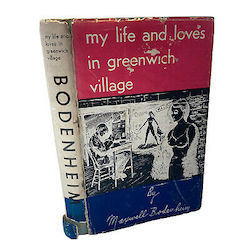
Then came Aimee Cortez, widely feted as “the Mayoress of Greenwich Village.” She earned the title by stripping naked at private parties and Webster Hall shindigs and gyrating a wildly erotic dance. According to Churchill, this display sometimes ended with her going off with some lucky male, but other times she’d stop abruptly, with a look of terror and confusion, and run off. In a later era she’d be prescribed a drug for this clearly disturbed behavior, but in the Village of the late 1920s, where “a hideous lust… pervaded the air” as Bodenheim’s My Life and Loves in Greenwich Village put it, she was merely celebrated as the queen of the modern-day bacchantes. Not long after Gladys and Virginia made the papers, Aimee was found with her head in her own oven, also clutching Bodenheim’s portrait. She was dead at nineteen.
Bodenheim was indirectly implicated in the sad end of another lover, a teenager from the outer boroughs with the improbable name Dorothy Dear. When she wasn’t with him in his MacDougal Street apartment, he wrote her love letters that she carried in her purse. One afternoon she was aboard a rush hour subway train heading from Times Square to the Village when it derailed at a faulty switch, killing sixteen passengers, including Dorothy. Bodenheim’s love letters were found scattered around the wreckage.
By the end of the 1920s Bodenheim was a wreck himself. From the 1930s until his death he was a fixture on the streets and in the bars of the Village, by turns annoying and sad-making, decaying before his old friends’ eyes into a stinking, toothless ghost, “tottering drunkenly to sleep on flophouse floors, shabby and gaunt as any Bowery bum,” as Hecht put it. Still, Hecht gallantly added, “Bogie hugged his undiminished riches – his poet’s vocabulary and his genius for winning arguments. He won nothing else.” He cranked out more cheap novels, drank the money, and stooped to hawking his poems to tourists in Washington Square for a quarter each. Wiseacres in the bars fed him gin and laughed at his drunken mumblings and rants, which sometimes yielded a famous line like “Greenwich Village is the Coney Island of the soul.”
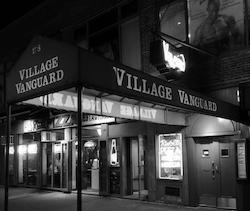
Poets were the main entertainment at Max Gordon’s Village Vanguard in the mid-1930s. Gordon couldn’t afford to pay them; they performed for whatever change the patrons tossed at their feet. Poet Eli Siegel, later founder of the Aesthetic Realism movement, was the emcee in the early years, but the crowd really came to see three ghosts of the Village Past – Joe Gould, Harry Kemp and Maxwell Bodenheim. They hung out there because Gordon tolerated them and his patrons were easy marks for a few free drinks. In his memoir Live at the Village Gate, Gordon describes how Siegel would call Gould out of the crowd with the cry, “Ladies and gentlemen, the Harvard terrier and boulevardier, Joseph Ferdinand Gould!” Gould would shuffle up to the spotlight and do his schtick, while Bodenheim, tall and imperious, would stalk the shadows at the back, “point his finger, and shout, ‘Eli Siegel! I hate you, Eli Siegel. You rat!’” Gordon continues:
Eli would wait for Bodenheim to shape up so he could call on him to recite. But it was no use. Bodenheim, swirling crazily, eyes glazed, arms outstretched, would suddenly stop and point his finger at a frightened girl who had refused him a dance during intermission. “Rat!” he’d shout at her.
Despite the frightening deterioration of his physical and mental hygiene, Bodenheim still attracted a certain type of desperate woman, usually in decline herself. He met the last of them in 1951 when Ruth Fagan bought a poem from him with her last quarter. She was thirty-two, he was a fifty-nine-year-old derelict, and within a couple of weeks they were going around as Mr. and Mrs. Bodenheim, though it’s not clear they ever bothered to make it official. They decayed together for the next couple of years, chronically broke and drunk, descending from cheap rooming houses to flophouses to sleeping in hallways and doorways. She turned tricks when she could, and he beat her when he found out. In 1952 they made a horrific spectacle of themselves at a fancy reunion for surviving members of the original Chicago Renaissance group, where he panhandled the guests while she propositioned them.
If the Bodenheim of the early 1950s was a disgusting or amusing clown to the tourists, and an embarrassment and bother to his old friends, he was something of a martyred saint to the generation of bohemians who came to the Village after World War Two. In his headlong descent into the abyss, his lust for the extremes of degradation, his lust for lust itself, he was like a dark archangel of negative capability for them, representing the ultimate rejection of bourgeois virtue and mainstream values, even to the point of total self-destruction. He comes up several times in the published diaries of Judith Malina, co-founder of the Living Theatre, from this period. One night in 1951 she and her husband Julian Beck were in the San Remo, the dark and smoky bar at Bleecker and MacDougal Streets that Bodenheim often haunted:
A ragged drunk approaches our table. In terrible shape. Ash blond hair askew. He lurches forward, his hands resting on the table. Directly to Julian: “What’s your name?”
“My name is Julian Beck.”
“My name is Maxwell Bodenheim. I’m an idiotic poet.”
And he turns and moves off before we can speak.
The late Roy Metcalf, who was a young newspaper reporter in the early 1950s, also encountered Bodenheim in the San Remo. “Bodenheim had a great face, an alcohol-ravaged face,” he recalled. “Once a guy from uptown wanted to see Greenwich Village, so we went down to the San Remo. There was Bodenheim. He said, 'Bring him over, let’s buy him a drink.’ He expected Bodenheim to say something. Bodenheim by that time was so paralyzed by alcohol that all he could do was bray, 'Aaaaargh.’”
In 1953 Malina went into the Waldorf Cafeteria on Sixth Avenue, where artists hung out. The food was lousy, the lighting made people look so bad they nicknamed it the Waxworks, and the other patrons tended to be bums, drug addicts, tough guys and cops. The staff was not particularly welcoming to arty boho types. So naturally that’s where Bodenheim and Ruth went to celebrate his birthday. Malina writes that a friend stole a pumpkin pie from the counter as a present for Bodenheim. “A cop sees him, but is somehow content with my explanation that Maxwell Bodenheim is a great poet and that his birthday should be celebrated. The counterman is not so generous: 'I ain’t doin’ this for love.’ We all eat. Ruth Bodenheim curses the cafeteria. Some junkies come and tell horrible tales of hospitals and arrests. One taps his eye with a knife to show us that it’s glass. Ruth Bodenheim smiles in an aristocratic manner: 'I’d never have believed it wasn’t real,’ as if she were consoling the owner of false jewels.”
“Do we not idolize Maxwell Bodenheim although we are sometimes loath to talk to him and always ashamed of our condescension to him?” Malina wonders in another entry. “What we admire is Bodenheim’s refusal to resist. We fight all the time, resisting temptation. We admire those who don’t. Even if it’s suicidal.” And later: “Even self-contempt when fierce enough is magnificent. The virtue of the extreme is its extremity. Nature loves extremes as much as she loathes a vacuum.”
In 1953, Ruth took up with a violent, mentally unstable dishwasher named Harold Weinberg. One night in the winter of 1954 the three of them wound up in Weinberg’s room off the Bowery. Bodenheim roused himself from a drunken stupor to see Ruth and Weinberg having sex. He attacked Weinberg, who pulled out a .22 and shot him through the heart. Then Weinberg stabbed Ruth in the chest. The last photos of Bodenheim show him and Ruth lying dead in the squalid room.
“The hideous death of Bodenheim blankets the Village in a funereal spirit,” Malina wrote. “Who dares confess to the wrenching excitement of seeing a companion’s mauled corpse on the front page of every newspaper, and all of us knowing that the worst has again triumphed?”
Cops picked up Weinberg a few days later. At his trial he called his victims Commie rats and shouted that he “did the world a favor” by getting rid of them. He sang “The Star-Spangled Banner” as he was led out of the courtroom and off to Bellevue.
Today, Bodenheim is remembered more for this tabloid end than for any other achievement. Even his memoir was a dispiriting sham. My Life and Loves in Greenwich Village, published posthumously in 1954, was ghostwritten by a hack who, like everyone else in the Village, had bought him drinks to listen to his drunken ramblings. It’s a loose collection of vignettes, anecdotes, and racy gossip that was already antique when the book appeared. His old friend Hecht, who sent a check for $50 to help pay for Bodenheim’s cheapjack funeral, based his 1958 Off-Broadway play Winkelberg on him. (“There was never a man as irritating as Winkelberg.”) It ran for a month at the Renata Theatre on Bleecker Street, then sank into oblivion along with much of Bodenheim’s own writing.
by John Strausbaugh
5 notes
·
View notes
Text
Knightstone Household: Chapter 9, Part 9


Adam wakes up in a good mood. It’s his day off meaning he can take some time to work on his skills. First up though, food for the family. He cooking away but actually thinking about the painting he wants to finish when he feels things get hot. The food caught fire! Smiling through the chaos he took steps to douse the flames and, leaving hot breakfast for his family, heads upstairs to shower.



Suzanna: Good morning Silas
Silas: Morning Mummy
Suzanna: Are you feeling well still? You didn't catch a chill from the snow?
Silas: Yeah I’ll be fine
Silas speed eats his leftover pancakes so that he can do some reading before school. He’s been feeling like mysteries. Suzanna leaves him to clean the dishes and do other chores while a freshly showered Adam sits down. He’s not too sure about Silas reading such a big book when he’s not even eight but Adam read plenty of books he shouldn’t have when he was young. Seems silly to tell him off for curiosity that’s harming no one else.



After he’s finished Adam heads back upstairs to the veranda. He has a set of easels up here, the surrounding views often inspire him. Thinking hard he begins to paint. His day job is critiquing art but he enjoys creating his own works. When he finishes he congratulates himself on another excellent art piece and after some thinking decides to sell it to the local gallery to increase his fame.



Suzanna: Silas if you don’t leave now you’ll miss the bus
Silas: Sorry mum. Can I invite Ruth and Tyree around after school
Suzanna: Sure, I’ll let your dad know. Have a good day
Silas: Bye Mummy, love you

With one son at school Suzanna went to check on the other. Pollock had been having a sleep in but was happy enough to get up and be put in front of food. While he ate Suzanna carried on with her chores, four people made a lot of laundry.
Pollock: MUMMY
Suzanna could hear him from the bedroom and went back to get him out of his high chair. Before she put him down however she gave him a big snuggle.
Suzanna: What are you going to do today
Pollock: Not no
Suzanna: Whatever you do you let Daddy work when he needs to okay Moondust
Pollock: Yes Mummy


While Suzanna started tending her garden before her shift the frost slowed her down and she didn’t manage to finish. Going to find Adam she asked if he could finish it, kissed him on the cheek, and sped off to work. Adam went outside and watered some of the plants, although it was a bit tricky to tell what needed a drink in the snow.


Adam checked the machine but the washing was still spinning so he got out his guitar and practiced a few songs. Pollock, who had been reading inside, came out at the sound of music.
Pollock: Daddy play
Adam: Sorry buddy, I need to practice
Pollock: No Daddy. I play. Daddy watch
Adam smiled as Pollock began the task of moving himself down the stairs and jumped in the snow. He was glad Pollock was content to entertain himself.


Eventually the washing was done and Adam hung it up before collecting Pollock to take inside.
Pollock: Why in Daddy
Adam: We were outside for a while, don’t want to get too cold. Can you feel the heater inside
Pollock: Yes. Daddy can play?
Adam: You want to play or you want me to play with you
Pollock: With Daddy



The pair played for a while but Adam wanted to work on his writing so he took Pollock in to the office room with him.
Adam: Alright Pol, stay in here where Daddy can hear you okay
Pollock: Kay Daddy
So while Adam worked on his latest book Pollock happily played with the toys, enjoying scuttling through the tunnel especially.



Pollock: What Daddy do
Adam: Hmm? Oh I’m writing my book
Pollock: Huh?
Adam: It’s a science fiction book called We Came From Sixam
Pollock: Did Daddy
Adam: No Daddy didn’t. Mummy and Daddy came from earth carriers. But when you write books you can make up your own stories. My main character comes from Sixam
Pollock: Oh. Kay



Pollock grabbed his tablet and sat by Adam as he did his final edits. Eventually Adam felt like the book was good enough to go to the publishers. With Pollock escorting him he went to the mailbox and posted off the manuscript. Later in the evening his publisher called to let him know the book had been nominated for an award, very exciting!



Previous ... Next
#sims 4#the sims#simblr#my sims#ts4#active simblr#R0909#AdamKnightstone#SuzannaKnightstone#SilasKnightstone#PolKnightstone
25 notes
·
View notes
Text

Madge Kennedy (April 19, 1891 – June 9, 1987) was a stage, film and TV actress whose career began as a stage actress in 1912 and flourished in motion pictures during the silent film era. In 1921, journalist Heywood Broun described her as "the best farce actress in New York".
Kennedy was born in Chicago. Her father was a judge in a criminal court. After she and her family lived in California, she moved to New York City with her mother to paint. She studied two years at the Art Students League, planning to be an illustrator. Luis Mora saw her art work and recommended that she go to Siasconset (in Nantucket, Massachusetts) for a summer.
The Siasconset colony was evenly divided among actors and artists, and painters often gave theatrical performances.
Kennedy appeared in a skit written by Kenneth and Roy Webb[5] and impressed professional Harry Woodruff, who commented, "She could act rings around anybody."[citation needed] As a result, she was offered the lead opposite Woodruff in The Genius. Soon she was in Cleveland, Ohio, where Robert McLaughlin gave her work with his stock company.
Kennedy first appeared on Broadway in Little Miss Brown (1912), a farce in three acts presented at the 48th Street Theater. Critics found Kennedy's performance most pleasing, writing, "Miss Kennedy's youth, good looks, and marked sense of fun helped her to make a decidedly favorable impression last night." That same year she appeared in The Point of View.
1914 saw her in the popular Twin Beds, and in 1915 she scored a sensational hit at the Eltinge Theater as Blanny Wheeler opposite John Cumberland in Avery Hopwood's classic farce, Fair and Warmer, which ran 377 performances. Critic Louis Vincent DeFoe wrote, "Madge Kennedy proves anew that consummate art is involved even in farcical acting."[citation needed] In the late Teens she would leave the stage for three years to appear in moving pictures for Samuel Goldwyn (see "Films" below).
Kennedy returned to the New York stage in November 1920, playing in Cornered, staged at the Astor Theatre. Produced by Henry Savage, the play, taken from the writing of Dodson Mitchell, offered Kennedy a dual role.
In 1923 she starred opposite W.C. Fields in Poppy, where she enjoyed top billing. In the comedy, Beware of Widows (1925), which was produced at Maxine Elliott Theatre, a reviewer for The New York Times noted, once again, Kennedy's physical beauty as well as her skill as a comedian.
Later, she starred in Philip Barry's Paris Bound (1927) and in Noël Coward's Private Lives (1931), having succeeded Gertrude Lawrence.
After an absence of 33 years, she returned to Broadway in August 1965, appearing with her good friend Ruth Gordon in Gordon and Kanin's A Very Rich Woman.
In 1917, Sam Goldwyn of Goldwyn Pictures signed Kennedy to a film contract. She starred in 21 five-reel films,[2] such as Baby Mine (1917), Nearly Married (1917), Our Little Wife (1918), The Service Star (1918) and Dollars and Sense (1920).
Kennedy told a reporter in 1916, "I have discovered that one of the best ways to act is to make your mind as vacant as possible."[citation needed] In 1918, Our Little Wife premiered with Kennedy playing the role of Dodo Warren. The story is about a woman whose marriage is both humorous and sad. The screenplay was adapted from a comedy by Avery Hopwood.
A Perfect Lady (1918) was released in December and was taken from a stage play by Channing Pollock and Rennold Wolf. Kennedy co-starred with James Montgomery. In 1923, she starred in The Purple Highway. The screenplay is an adaptation of the stage play Dear Me, written by Luther Reed and Hale Hamilton.
The 1920s were a productive period for Kennedy. Following The Purple Highway, she had prominent roles in Three Miles Out (1924), Scandal Sheet (1925), Bad Company (1925), Lying Wives (1925), Oh, Baby! (1926), and Walls Tell Tales (1928).
She was out of motion pictures until she resumed her career in The Marrying Kind (1952)[2] and Main Street to Broadway (1953).
In the late 1950s, she combined TV work with roles in movies like The Rains of Ranchipur (1955), The Catered Affair (1956), Lust for Life (1956),[2] Houseboat (1958), A Nice Little Bank That Should Be Robbed (1958), Plunderers of Painted Flats (1959), and North by Northwest (1959). She has an uncredited part as a secretary in the Marilyn Monroe film Let's Make Love (1960).
Her film career endured into the 1970s with roles in They Shoot Horses, Don't They? (1969), The Baby Maker (1970), The Day of the Locust (1975), and Marathon Man (1976).
As a guest on the Red Davis series (1934) over NBC Radio and WJZ (WABC-AM) network, Kennedy worked with Burgess Meredith who had the title role. She was written into the full script by the program's creator, Elaine Sterne Carrington.
Kennedy was prolific in terms of her television appearances beginning with an episode of the Schlitz Playhouse of Stars (1954). Her additional performances in television series are Studio 57 (1954), General Electric Theater (1954), Science Fiction Theater (1955), The Life and Legend of Wyatt Earp (1960), The Best of the Post (1961), Alfred Hitchcock Presents (1956–1961), The Alfred Hitchcock Hour (1962), The Twilight Zone (1963), and CBS Playhouse (1967). She also had a semi-recurring role as Theodore Cleaver's Aunt Martha on the hit family sitcom Leave it to Beaver (1957–63). She played June Cleaver's aunt and the Beaver's great-aunt. Ms. Kennedy also appeared as Mimi (the wife of Albert, Felix's grandfather played by Tony Randall) in The Odd Couple (1972).
Kennedy and her husband, Harold Bolster (who had been an executive with Goldwyn), formed Kenma Corporation, a film production company. Kenma made The Purple Highway (1923) and Three Miles Out (1924), both of which starred Kennedy but had little success.
Kennedy's contract with Goldwyn ended in 1921.[2] She decided to return to the stage so that she could be close to her husband, broker Harold Bolster, in New York. Bolster died on August 3, 1927 from an illness he contracted months before during a business trip to South America. He was a member of the New York banking firm of Bennett, Bolster & Coghill. Bolster was 38 and a veteran of World War I. Kennedy inherited more than $500,000 when he died.
She wed William B. Hanley Jr., in Kingman, Arizona, on August 13, 1934. Hanley was an actor and radio personality. The couple resided in Los Angeles, California. Kennedy retired temporarily after her marriage before returning to work in entertainment. The couple would remain married until Hanley's death in 1959.
She enjoyed outdoor activities such as playing golf, horseback riding and driving cars. She owned a Willys-Knight Great Six which she drove avidly at the time she was touring in 1929 in the play, Lulu. In August 1929, she was sued in a Norwich, Connecticut court for damages she caused in a car accident on the Boston Post Road near Groton, Connecticut, in June 1928. The plaintiffs asked for $13,000.
Madge Kennedy died of respiratory failure at the Motion Picture & Television Country House and Hospital in Woodland Hills, California, in 1987. She was 96.
Kennedy has a star at 1600 Vine Street in the Motion Pictures section of the Hollywood Walk of Fame. It was dedicated on February 8, 1960.
#silent era#silent hollywood#silent movie stars#golden age of hollywood#classic movie stars#classic hollywood#old hollywood#1910s movies#1920s hollywood#1950s hollywood#1950s television#1960s hollywood#1960s television#1970s hollywood#1970s television
3 notes
·
View notes
Text
Sartle School of Art History: Feminist Art

Feminist art theory emerged in the 60s in the midst of the Civil Rights Movement and the Vietnam War. During this period of protest, Linda Nochlin published the seminal article “Why Have There Been No Great Women Artists?” exploring the institutional biases that prevented women from achieving the success of their male counterparts. Nochlin questioned these institutions through the inherent male gaze of art history, which viewed the world through the lens of the white western heterosexual male. The male gaze prefers mediums like painting and sculpture, which were predominately male due to the historical exclusion of women from life-drawing and therefore the necessary study of anatomy. The subjects women were able to paint, like domestic scenes drawn from their daily lives, were deemed as “feminine” and inferior. The male gaze in art positions the artist and viewer as male and women as muses and objects of desire, exemplified by the prevalence of the female nude. The legacies of women artists are also often undercut by the narrative of their entanglement with male artists.

Dior’s first female creative director Maria Grazia Chiuri references Nochlin in the Spring/Summer 2018 collection
Feminist artists subverted the male gaze through their art, seeking to rewrite male-dominated art history. Women created alternative venues to show their work as well as worked to change existing institutions to promote the visibility of female artists in the market and embraced alternative materials that were seen as feminine including textiles, performance, and video, which did not have the same male precedents that painting and sculpture had.
Judy Chicago, Shelia Levrant de Bretteville, and Arlene Raven did this by creating art from a female perspective in their 1977 exhibit “What is Feminist Art?” at the Los Angeles Women’s Building. The exhibit began as a project by activists Ruth Iskin, Lucy Lippard, and Arlene Raven in which they sent pink postcards with the prompt: “If you consider yourself a feminist, would you respond by using one 8 1/2” x 11” page to share your ideas on what feminist art is or could be.” The Los Angeles Women’s Building became a mecca of feminist art, offering art courses and a studio for women.
Since the experiences of women are not the same, feminist art took on many mediums and approaches. One of the most famous pieces of installation art, The Dinner Party by Judy Chicago featured thirty-nine place settings of women in history at a triangular table. The table was divided into three sections of history–prehistory to Classical Rome, beginning of Christianity to Reformation, and American Revolution to Women’s Revolution. Below the table, the Heritage Floor was inscribed with the names of 998 women and one man. By placing female historical figures at the table, Chicago questions the male-focused narrative of history.

Judy Chicago, The Dinner Party, 1974-79.
Another approach was to subvert the patriarchal tropes by satirizing the myth of the male artistic genius. In the boys’ club of Abstract Expressionism led by figures like Jackson Pollock and Willem de Kooning, women artists like Pollock’s own wife Lee Krasner and de Kooning’s wife Elaine de Kooning were marginalized within the artistic community, were overshadowed and their identity as artists seen as attached to their husbands rather than as real independent artists. Elaine de Kooning resisted this narrative, painting her male subjects through the same voyeuristic lens, remarking in 1987, “women painted women: Élisabeth Louise Vigée Le Brun, Mary Cassatt, and so forth. And I thought, men always painted the opposite sex, and I wanted to paint men as sex objects.” In Mary Beth Edelson’s Some Living American Women Artists, subversion takes form in a parody of da Vinci’s canonical painting The Last Supper. Edelson collages the faces of her friends and colleges over the faces of Jesus and his disciples. Georgia O’Keeffe is Jesus, and other artists, including Alma Thomas, Yoko Ono, Faith Ringgold, Agnes Martin, and Alice Neel, are randomly placed. There is also no one in the role of the traitor, Judas. In her self-described “spoof of the male exclusivity of the patriarchy”, she addresses the role of religion as a cultural force in the subordination of women.

Mary Beth Edelson, Some Living American Women Artists, 1972.
Feminist art can also be activist art when it seeks to incite change. During this period, much of the activist art was intersectional, and many of the artists and techniques between each of these movements were intertwined, often addressing multiple issues as artists often identified with the experiences of other groups.

Betye Saar, The Liberation of Aunt Jemima, 1972.
Betye Saar’s The Liberation of Aunt Jemima is an iconic piece of feminist and art and a symbol of Black liberation. It is an assemblage that positions the “Aunt Jemima” mammy figure as a derogatory figurine of an armed warrior. The mammy caricature was a commercialized image of a Black woman used to sell objects, like the broom that she holds and the pancake mix that makes up the background, that serves their owners. The mammy was used to enforce oppressive stereotypes of Black women as obedient and submissive servants whose only purpose was to care for their owner/employer. Saar’s Aunt Jemima is a rejection of this trope, wielding a gun to symbolize power and a mixed-race child to represent the sexual assault and subjugation of Black female slaves by white men. In her reconstruction of a self-liberating Aunt Jemima, Saar rejects demeaning stereotypes and systematic oppression.

Guerilla Girls, the Advantages of Being A Woman Artist, 1988.
Artists employed the techniques of Pop Art, using popular culture to spread their message. The Guerrilla Girls were a group of anonymous female artists focused on sexism and racism in the art world. They used humor and wit in their work and wore gorilla masks in public, taking the aliases of famous female figures to keep the focus on issues rather than their personalities. The Guerilla Girls publicized the inequities of the art world through posters in NYC. In The Whitney Museum Gets a New Name, the demographics of the artists are displayed, exposing the return to the dominance of male artists at the Whitney Biennial in 1995 after the 1993 exhibit, which had an unusually high number of female artists and was denounced by art critics. The 1989 poster Do Women Have to Be Naked to Get Into the Met. Museum? is a response to the popularity of female nudes by presenting an image of the Grande Odalisque by Ingres, one of the most famous nudes in history, with a gorilla mask placed over the head. It was originally commissioned by the New York Public Art Fund but was rejected for not being clear enough, to which they responded by renting out advertising space on New York buses themselves until the bus company canceled their lease because the image was seen as too suggestive (partially because of the “fan” in her hand).

Guerilla Girls, Do women have to be naked to get Into the Met.Museum?, 1989.
Contemporary artists still create art about gender. The Guerilla Girls have continued to create art which protests the practices of institutions that exclude female artists and present women as voyeuristic objects. Female artists are still creating art as a form of resistance against the inequalities of the art world and the world at large. Feminist art is not an art movement with a distinctive style, rather it is art that is created through the lens of feminist art theory. Artists have utilized art as a form of institutional critique against exclusionary practices that have prevented women from achieving the same success in art. Feminist art began in the 60s during a time when activism and art were intertwined but has continued into the present as female artists continue to fight against institutional barriers.
By: Abby Li
#feminist art#female artists#feminism#5 women artists#women in art#Linda Nochlin#art history#history of art#art historian#sartle school of art history#art history 101#serious art history
2 notes
·
View notes
Text
Forever Art Mooching
Some of the Fab art I’ve seen in Mayfair galleries these last couple of weeks:

James Turrell
At Pace Gallery until March 27 2020
From the PRESS RELEASE: James Turrell’s recent Constellation works, the focal point of this exhibition, are the culmination of Turrell's lifelong pursuit. Generating what the artist has called “spaces within space,” these luminous portals are instruments for altering our perception; gazing into them results in the slow dissolution of the boundaries of the surrounding room, enveloping the viewer in the radiance of pure color. Fusing the temporal, sensuous, and illusory qualities of his projection works and architectural installations, the Constellations synthesize several aspects of Turrell’s practice. Unlike his early projection pieces, however, they are not about generating an illusion; instead, they greet the viewer with the actual materiality of light, what Turrell calls “the physical manifestation of light, which we have trained our eyes too readily to look through rather than to look at.”
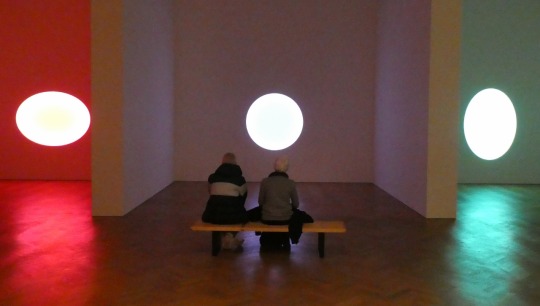





Monochrome 2
At Ordovas Gallery until 25 April 2020

Dan Flavin’s Untitled (for Charlotte and Jim Brooks) 4 (1964)
From THE PRESS RELEASE:Monochrome No.2 focuses on a selection of blue works by nine contemporary European and American artists as they contemplate the colour’s complex associations and aesthetic possibilities through a variety of media. The myriad hues that make up this enigmatic colour evoke the elemental as well as the emotional, tint our memories, and are apt, according to Goethe, ‘to disturb rather than enliven’. From an intimate blue ballpoint pen drawing made by Jackson Pollock in the late 1930s to a specially commissioned neon work by Joseph Kosuth, the exhibition touches upon the depth and diversity of blue, prized throughout the ages as the rarest and most mysterious of colours.
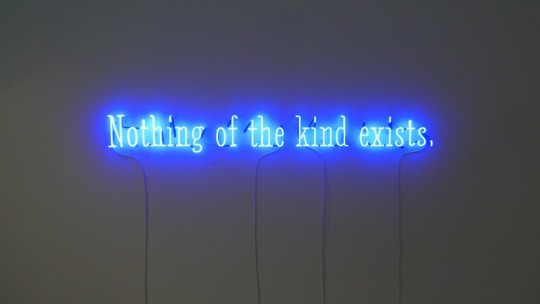
Joseph Kosuth - Nineteen Eighty-four(Orwell) #4 (2019)

Jackson Pollock - Untitled Pen, blue ink and brown crayon on paper c1939-42

Installation shot

Installation shot showing Roy Lichtenstein Seductive Girl (study) 1996
Yves Klein - La Marseillaise (ANT138) 1960
Cy Twombly - Untitled sculpture 2005
Felix Gonzalez-Torres - Untitled (loverboy) Blue paper, endless supply 1990
Heaven And Hell Are Just One Breath Away
Andy Warhol at S2 until 28 February
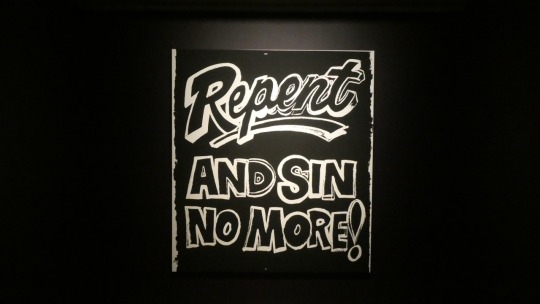
1985-86
From THE PRESS RELEASE: S|2 London presents a spotlight on the last cycle of paintings by Andy Warhol. Warhol was raised in a devout Byzantine Catholic household in Pittsburgh and was found to have retained a personal commitment to his faith throughout his life. Alongside his interest in consumer culture and celebrity, Warhol also explored religion and mortality within his practice, particularly towards the end of his career. The exhibition at S|2 will include works from this late period, including examples from Warhol’s 1986 Last Supper series, his iconographic crosses and skull, as well as his appropriations of religious pamphlets and slogans such as the prophetic Heaven and Hell Are Just One Breath Away! that became one of his final works.
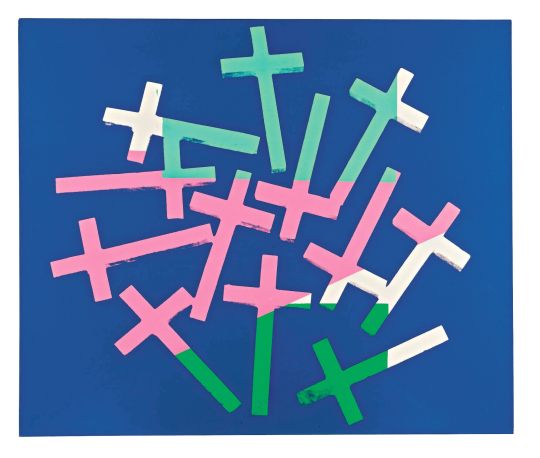
Crosses 1982
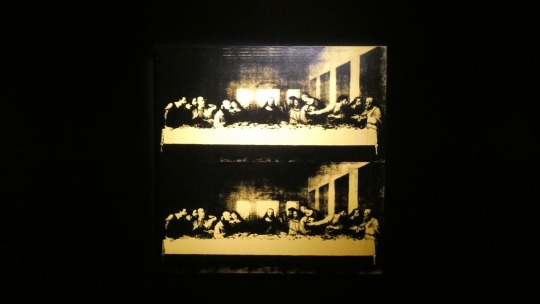
The last supper 1985-86

The Last Supper 1986
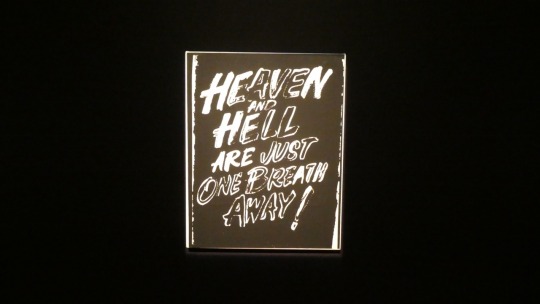
1985-86

Christ $9.98 (Positive) 1985-86
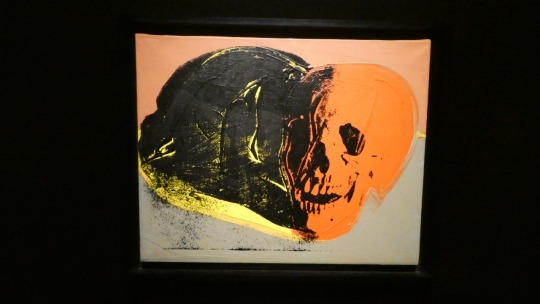
Skull 1976
A line Can Go Anywhere
Ruth Asawa at David Zwirner to 22 February 2020
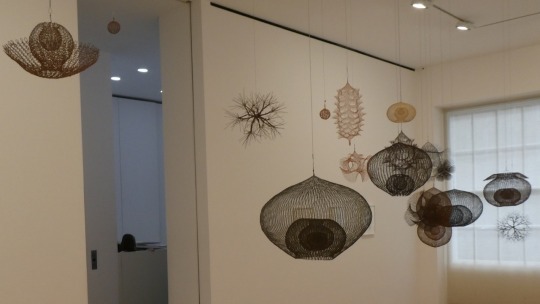
From THE PRESS RELEASE: This will be the first major presentation of the artist’s work outside of the United States and will include a number of her key forms, focusing in particular on the relationship between her wire sculptures and wide-ranging body of works on paper.
An influential artist, devoted activist, and tireless advocate for arts education, Asawa is best known for her extensive body of hanging wire sculptures. These intricate, dynamic, and sinuous works, begun in the late 1940s, continue to challenge conventional notions of sculpture through their emphasis on lightness and transparency. Relentlessly experimental across a range of mediums, Asawa also produced numerous drawings and prints that, like her wire sculptures, are built on simple, repeated gestures that accumulate into complex compositions. Although she moved between abstract and figurative registers in her sculptures and drawings, respectively, viewed together, the works in this exhibition nevertheless incite a rich dialogue and find commonality in their sustained emphasis on the natural world and its forms, as well as in their deft use of the basic aesthetic concept of the line. As she noted, “I was interested in it because of the economy of a line, making something in space, enclosing it without blocking it out. It’s still transparent. I realized that if I was going to make these forms, which interlock and interweave, it can only be done with a line because a line can go anywhere.”1
Born in rural California, Asawa was first exposed to professional artists while her family and other Japanese Americans were detained at Santa Anita, California, in 1942. Following her release from an internment camp in Rohwer, Arkansas, eighteen months later, she enrolled in 1943 in Milwaukee State Teachers College. Unable to receive her degree due to continued hostility against Japanese Americans, Asawa left Milwaukee in 1946 to study at Black Mountain College in North Carolina, then known for its progressive pedagogical methods and avant-garde aesthetic environment. Asawa’s time at Black Mountain proved formative in her development as an artist, and she was particularly influenced by her teachers Josef Albers, Buckminster Fuller, and the mathematician Max Dehn. She also met architectural student Albert Lanier, whom she would marry in 1949 and with whom she would raise a large family and build a career in San Francisco. Asawa continued to produce art steadily over the course of more than a half century, creating a cohesive body of sculptures and works on paper that, in their innovative use of material and form, deftly synthesizes a wide range of aesthetic preoccupations at the heart of twentieth-century abstraction.
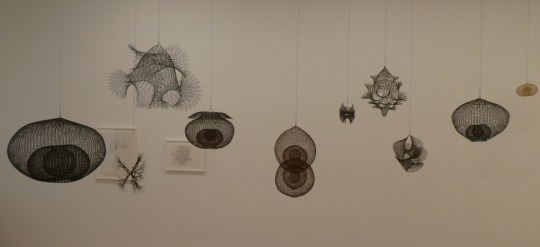

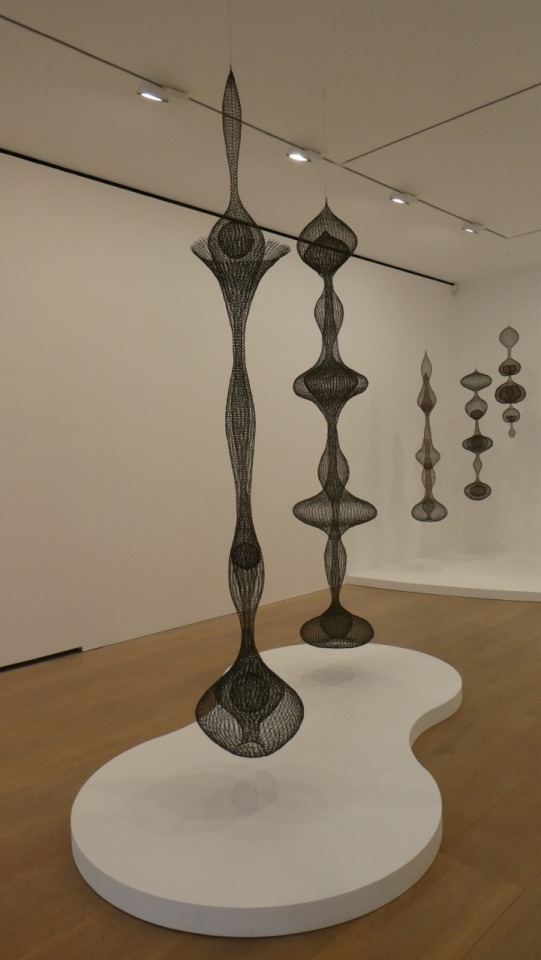
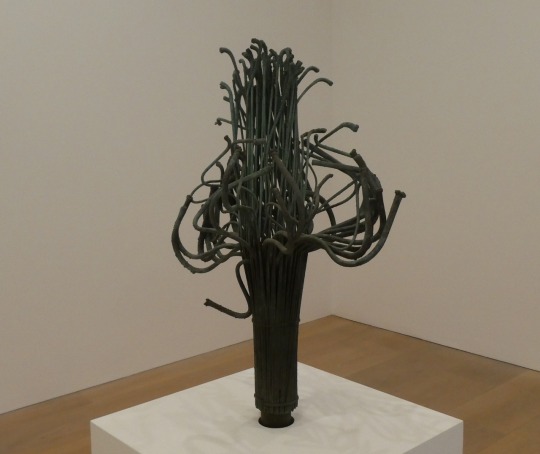
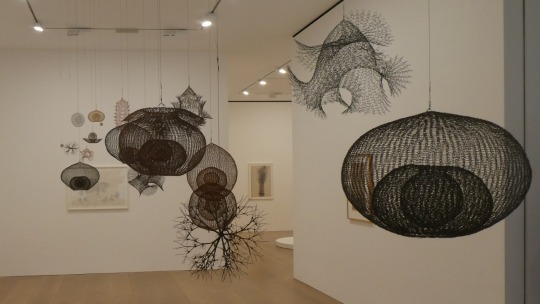
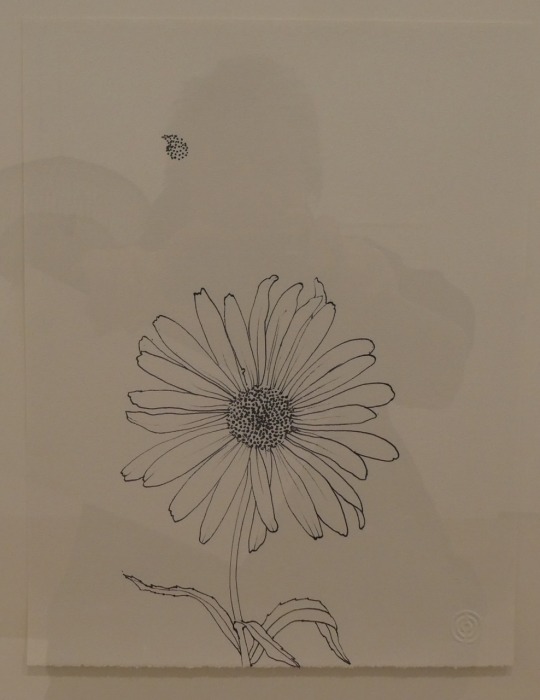
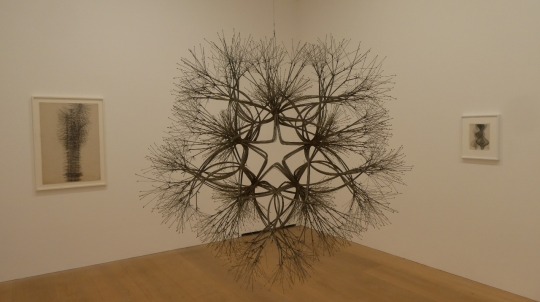
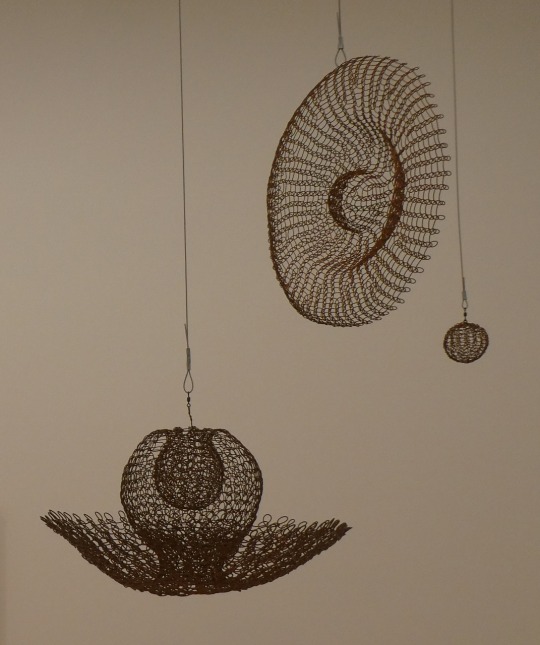
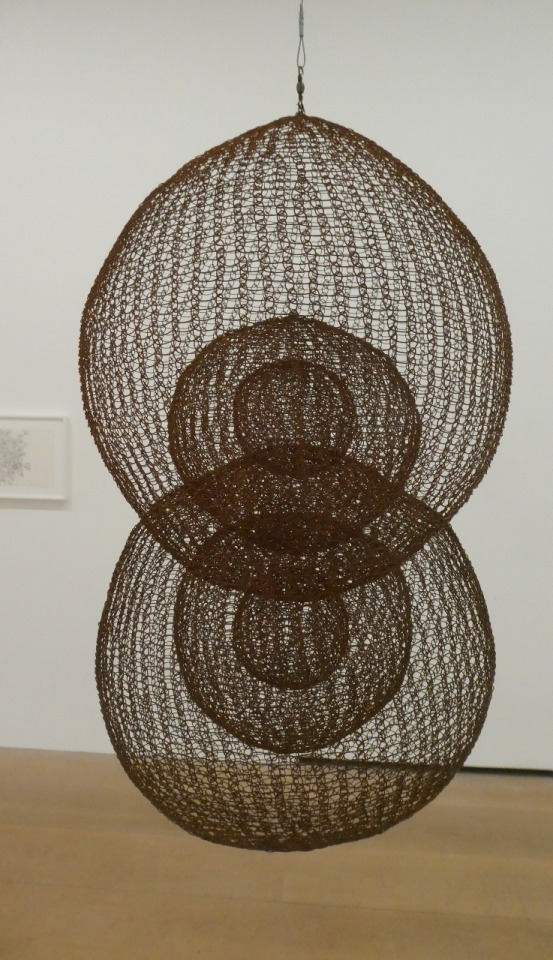
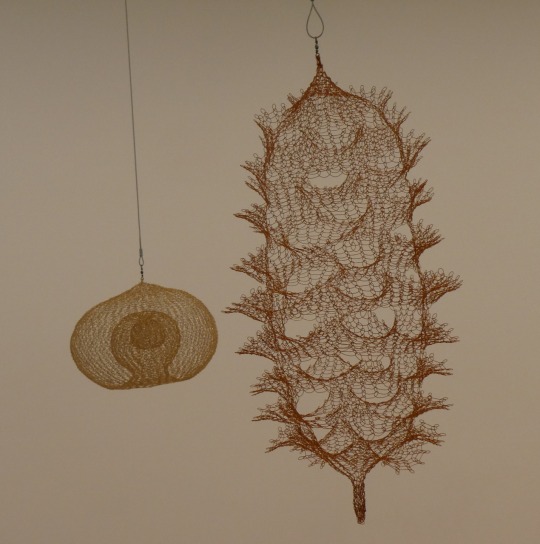

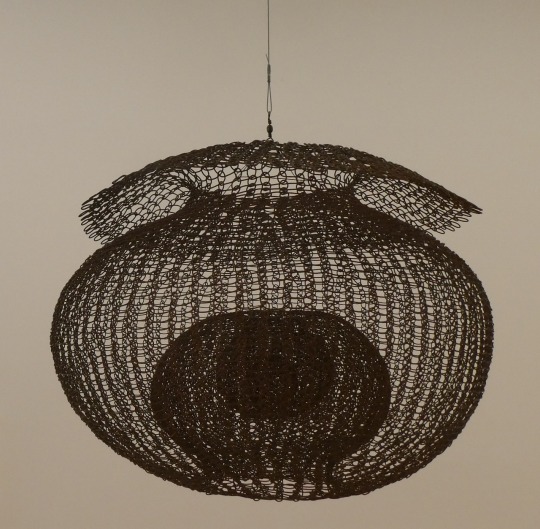

Work on paper at The Black Mountain College using BMC laundry stamp
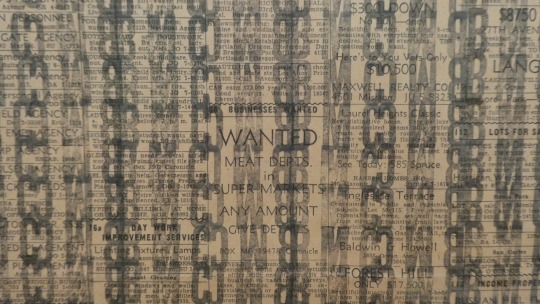
detail
“It doesn’t bother me. Whether it’s a craft or whether it’s art. That is a definition that people put on things. And what I like is the material is irrelevant. It’s just that that happens to be material that I use. And I think that is important. That you take an ordinary material like wire and... you give it a new definition. That’s all.” —Ruth Asawa 2002
After Sight
Benode Behari Mukherjee
at David Zwirner until 22 February 2020
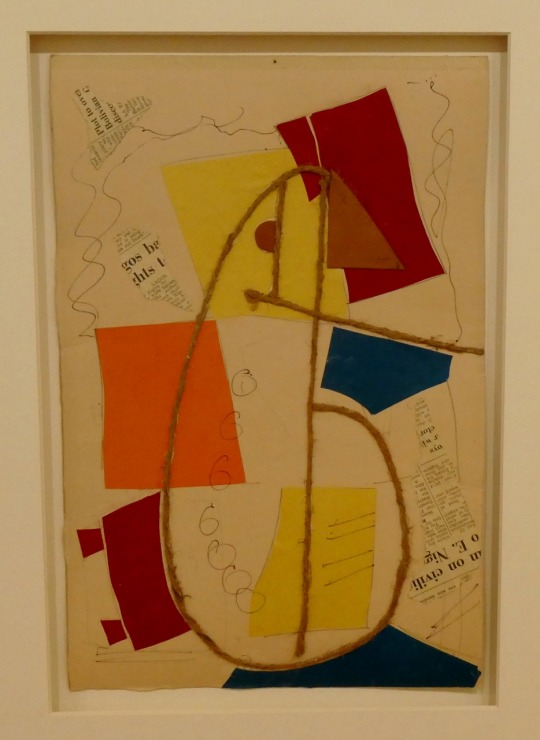
From THE PRESS RELEASE: The first solo presentation in Europe devoted to Mukherjee, the exhibition will focus on the artist’s collages from the late 1950s and 1960s, after he lost his sight.
A pioneering Indian modernist, Mukherjee blended imagery and iconography from Indian life with a signature visual style influenced by Indian, East Asian, and Western art practices and traditions. Mukherjee studied with the celebrated artist Nandalal Bose as one of the first students at the renowned Kala Bhavana, the fine-arts institute founded by the poet Rabindranath Tagore at Visva-Bharati University in Santiniketan, West Bengal. The curriculum of Kala Bhavana was structured similarly to that of the German Bauhaus (Tagore travelled to Europe often, and he visited the Weimar Bauhaus in 1921), with students encouraged to explore form and style in an open manner with various mentors. Rather than depicting mythological or nationalistic imagery, common themes and subjects among Indian artists at this time, Mukherjee examined nature and his immediate surroundings. He created works in a variety of media, from graphite drawings to wall frescoes, all of which exhibit a deeply modernist yet highly individualistic and contextually specific sensibility towards form, color, and composition. As art historian Juliet Reynolds writes: ‘[Mukherjee’s] attempt… was to reconcile Indian folk and classical art with far-eastern calligraphic painting, European early-Renaissance conventions and modern idioms.’

Cat 1965

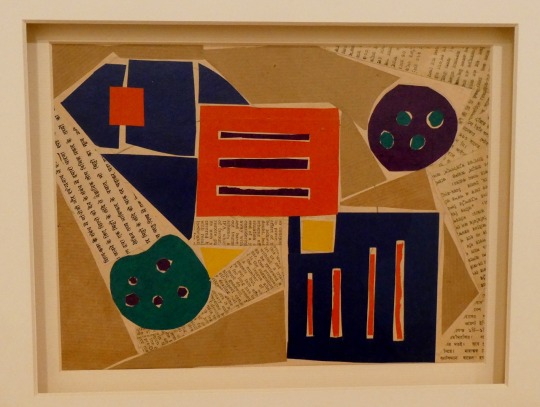
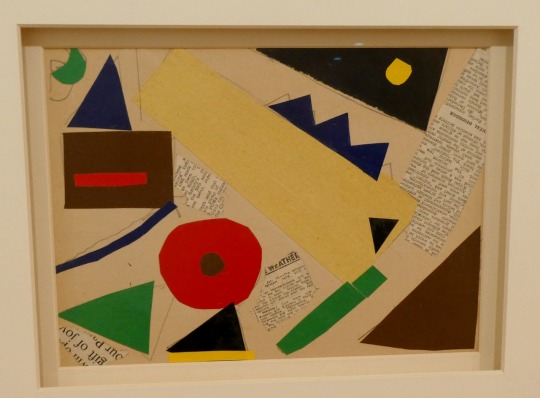
To Exalt the Empheral
Alina Szapocznikow, 1962 – 1972
at Hauser & Wirth to 2 May 2020
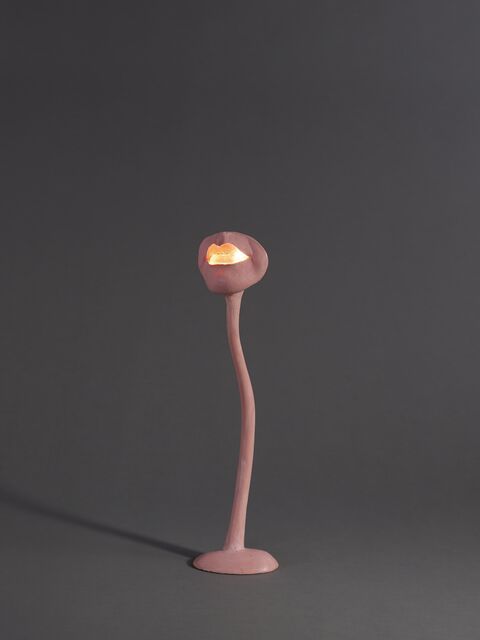
From THE PRESS RELEASE: In a brief but explosively inventive career, Alina Szapocznikow (1926 – 1973) radically re-conceptualised sculpture as a vehicle for exploring, liberating and declaring bodily experience. ‘To Exalt the Ephemeral: Alina Szapocznikow, 1962 – 1972,’ reveals the full expressive potential of this pioneering Polish artist’s work through the material innovations she made during the last decade of her life and is the first solo presentation of Szapocznikow’s work in the UK since her acclaimed exhibition at The Hepworth Wakefield in 2017.
The details of Szapocznikow’s biography have been well documented and readings of her work have often emphasised her experiences. Born in Poland to a Jewish family in 1926, she survived the horrors of concentration camps as a teenager. In the post-war years, moving from Prague to Paris, she ultimately abandoned the Socialist Realism endorsed by the Polish government, as well as the prevailing winds of modernist abstraction, to embrace Surrealist tendencies and the Pop-influenced New Realism of the Paris avant-garde, championed by Pierre Restany. Working furiously as she cycled through phases of artistic growth, Szapocznikow engaged themes related to the body with full intensity. In the last decade of her life, her experimentation with new materials acquired particular focus and force, yielding works that dramatically challenged the traditional language of sculpture and presaged approaches central to art today. Her work and life were cut short in 1973 when, at the age of 46, she succumbed to cancer.
‘To Exalt the Ephemeral’ begins with one of Szapocznikow’s pivotal works, made in 1962. ‘Noga (Leg),’ a plaster cast of the artist’s right leg, marks her shift away from the mere representation of the human body to a tangible imprint of her own personhood. Here, a single limb, detached from the larger structure that has defined it, becomes a symbol of individuation and a vehicle of pleasure, while nodding to the mechanical forces that commodify the female body.
Building on the idea of reproduction, Szapocznikow experimented with new industrial materials, including polyester resin and poured polyurethane foam. As the artist explained, ‘Plastic materials seem perfect to me for attempts to express and capture our age because of their repetitive possibilities, their lightness, their colours, their transparency, their inexpensiveness. The age of modular multiplication, of swift mass consumption, of automatic repetition. These symptoms that are so characteristic, so superficially gay and so sadly monotone and moving. I hope to be able to explore deeply the problem of the repeated module, in direct contact with the module’s industrial reproduction.’
Themes of mortality and violence have been a point of focus in the reception of the work, yet Szapocznikow equally mined the erotic and the absurd as terrains of investigation.

Through her material experiments, Szapocznikow generated a series of lamps, exemplified here by the ‘Lampe Bouche (Illuminated Lips)’ (1966) works, functional sculptures of glowing female lips extending from elongated stem-like bases. ‘Sculpture Lampe (Sculpture Lampe)’ (1970) combines a phallus-like form with a breast, the fragmented and juxtaposed body parts implying fetish objects. Although the artist lived and worked in Paris at the time, her focus on malleable material as a proxy for the body firmly positions her among contemporaries practicing in the United States, including Eva Hesse, Hannah Wilke, and Lynda Benglis, as well as noted friend Louise Bourgeois, to whom Szapocznikow dedicated and gifted two lamp sculptures similar to those on view.
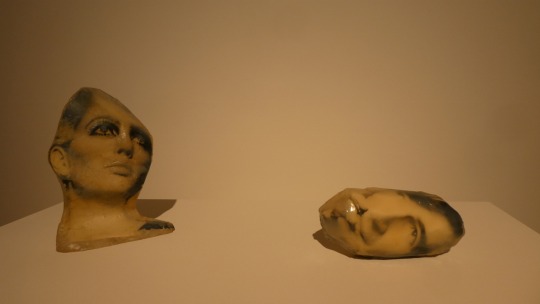
Souvenirs (Polyester resin and photographs) 1967
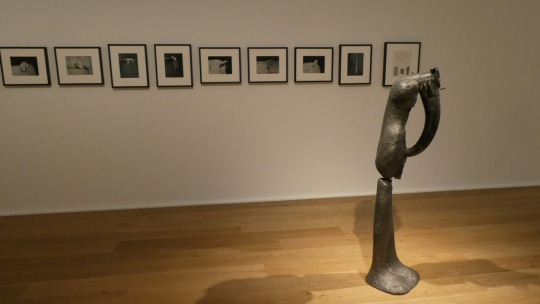
Man with Instrument 1965
Window
Isa Genzken at Hauser & Wirth to 2 May 2020

From THE PRESS RELEASE: ‘Window’ is an exhibition at our London gallery by Isa Genzken featuring a new and unseen body of work. Genzken’s immersive environment expands on the themes of travel, through elements of an aircraft cabin, and the window as a juncture between interior and exterior spaces. In this respect, it reveals the artist’s interest in architecture and light, a topic of enduring resonance in her work as seen in the landmark exhibition in Chicago in 1992, ‘Everybody Needs at Least One Window’.
Isa Genzken has long been considered one of Germany’s most important and influential contemporary artists. Since the 1970s, Genzken’s multifaceted practice has encompassed sculpture, photography, found-object installation, film, drawing and painting. Her work borrows from the aesthetics of Minimalism, punk culture and assemblage art to confront the conditions of human experience in contemporary society and the uneasy social climate of capitalism. Throughout her fifty-year career, Genzken’s primary focus has always been sculpture, and although her style has remained varied, her work has maintained a striking common thread and internal truth to both her vision and to the works of art themselves.
Love, By Any Means Necessary
Kendell Greers at Stephen Friedman Gallery to 5 March 2020
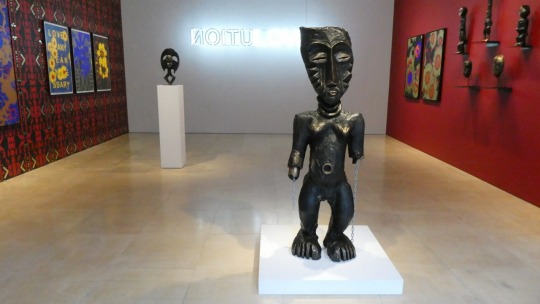
From THE PRESS RELEASE: A solo exhibition of new works by South African artist and curator Kendell Geers who lives and works in Brussels. The title of the exhibition derives from the protest movements of the 1960s and is inspired by a statement by Malcolm X about the use of violence in political liberation. At the centre of the exhibition is a large-scale black and white neon spelling out ‘REVOLUTION' in reverse so that the hidden word ‘LOVE' reads forwards. The artist explains, "In the wake of more than a century marked by affluence, we now stand at a dangerous crossroads... The Land Rights Claims in South Africa, the fence along the USA border, abortion rights in Alabama, the European refugee crisis, the ‘gilets jaunes', Brexit and climate change are not separate problems, but all simply facets of one larger problem of disintegration, dissolution, alienation, denial, segmentation, prejudice and bigotry in the name of profit." In today's highly charged socio-political climate perhaps the most subversive act of all is to love. In the gallery window another neon spells out the letters FUC KING HELL. This play on words is characteristic of Geers' use of language in his practice. A wordsmith and a trickster, in this exhibition Geers aims to put love back into the revolution "by any means necessary".

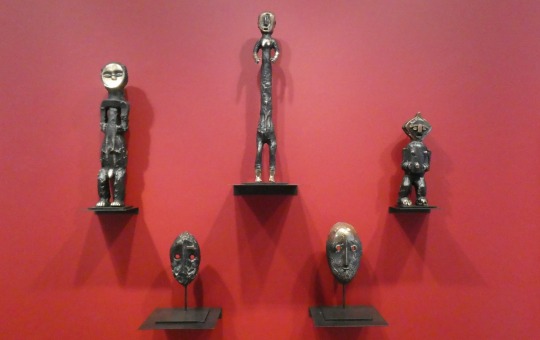
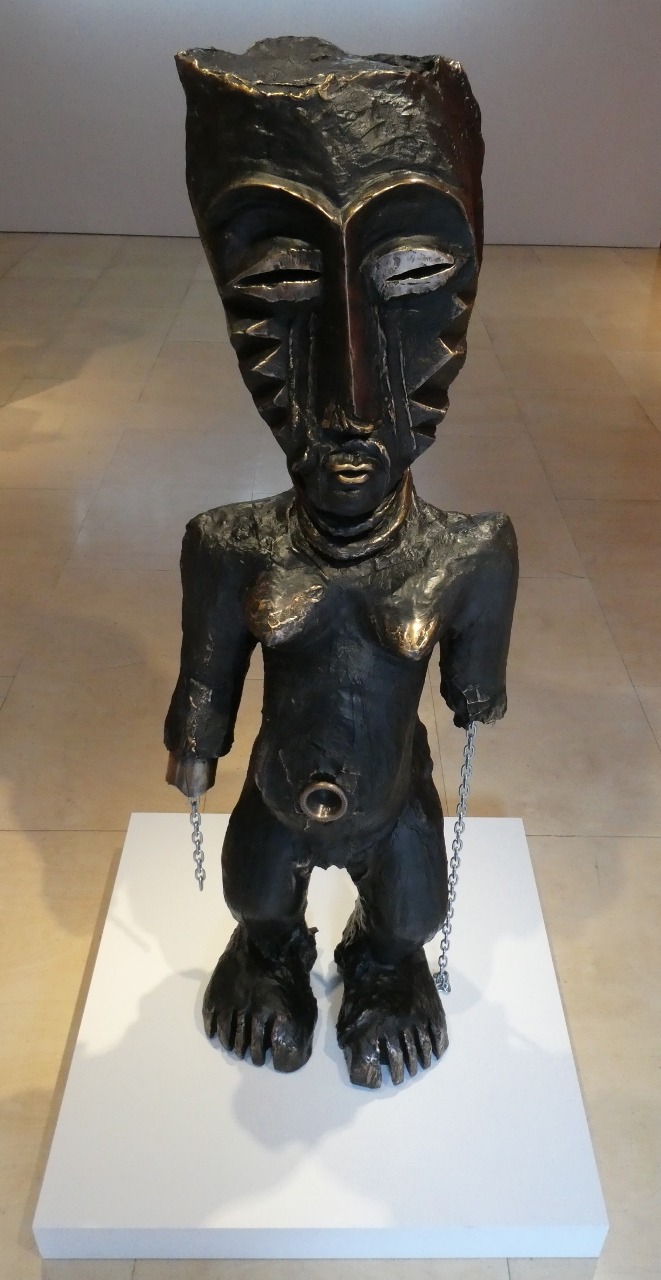
Geers also draws inspiration from the contradictions inherent in his identity as an African artist. Describing himself as an ‘AniMystikAKtivist', he weaves together diverse Afro-European traditions, including animism, alchemy, mysticism, ritual and a complex socio-political activism laced with humour and irony. A large bronze female figure stands like a sentinel in the gallery window. Her hands have been cut off and replaced with shards of glass. From each broken arm a chain dangles, resembling shackles from which she has liberated herself. A group of smaller bronze masks are influenced by Kota reliquaries, the first sub-Saharan African artworks to be exhibited in the West, examples of which were on display during Pablo Picasso's famous visit to Musée d'ethnographie du Trocadéro, Paris in 1907. In one of these works Geers has used a cast of his own mouth to close the mouth of the sculpture, bestowing it with "a kiss where art meets life".
Geers describes this exhibition as "a resurrection of spirit through an invocation of nature." A new series of paintings and works on paper, ‘Les Fleurs du Mal', is titled after a volume of poetry by Charles Baudelaire. Charged with an intense longing and melancholia, these paintings depict cut flowers whose petals simultaneously take the form of bullet holes or wounds. Severed from their roots and invoking a memento mori, the beauty of these blossoms lies in their fragility. The repetition of an emblem in these works is also inspired by Dutch wax batik fabrics, whose brightly coloured patterns are a symbol of African identity yet are designed in Indonesia and produced in the Netherlands. The investigation of repetitive patterns is also found in the artist's wallpaper that covers the gallery wall and teases the viewer's peripheral vision.
Geers creates work that aims to disrupt commonly accepted moral codes and principles. At the 1993 Venice Biennale he officially changed his date of birth to May 1968, a momentous year in world history for human liberation and equality. Employing a wide range of references- from the realms of history of art, pornography, iconography and kitsch- his work reveals razor-sharp humour that plays with the viewer's repulsion and ridicules racial or religious stereotypes.
3 notes
·
View notes